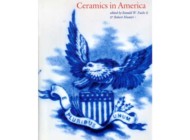We all have some time on our hands, so sit back by the fire and kick your feet up with one or more of these titles selected for the Holiday Book Roundup by editors at Antiques and The Arts Weekly. Some of them correspond to that exhibition you couldn’t get to, others are independent explorations of the material world. All are the prescription for the R&R that you deserve.
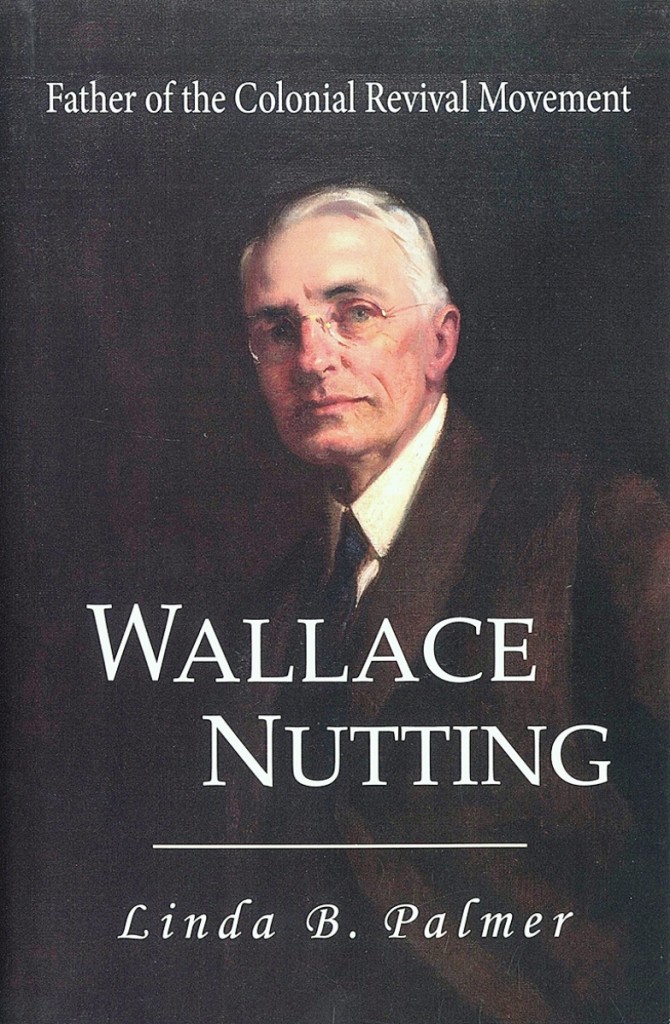
Wallace Nutting, Father of the Colonial Revival Movement, Linda B. Palmer, CK Books Publishing, New Glarus, Wisc.; 2020; 213 pp; hardcover; $30.
This slim but informational volume will be a handy addition and companion to the likely already-bursting shelves of collectors of books on American furniture. Nutting, who did as much for late Nineteenth and early Twentieth Century domestic taste as Martha Stewart, Marie Kondo and HGTV have done in the early years of the Twenty-First Century. Palmer is a retired registered nurse living in Western Connecticut. She views Nutting’s Furniture Treasury, which contains more than 5,000 photographs of American antiques, to be the “Bible” for all furniture collectors; this book tells the story of Nutting, a historic preservationist and a collector of Pilgrim Century furniture. The book is divided into 15 chapters beginning with “Who is Wallace Nutting” and finishes with “Berea College,” where Nutting was a benefactor and to whom he left his estate. It discusses the hand-colored photos he made that, by 1920 were hanging in the parlor of nine out of ten homes in the United States. A chapter devoted to the men and women who worked for him is featured alongside a discussion of his books, his furniture and the five historic properties he purchased, restored and filled with period antique furniture.
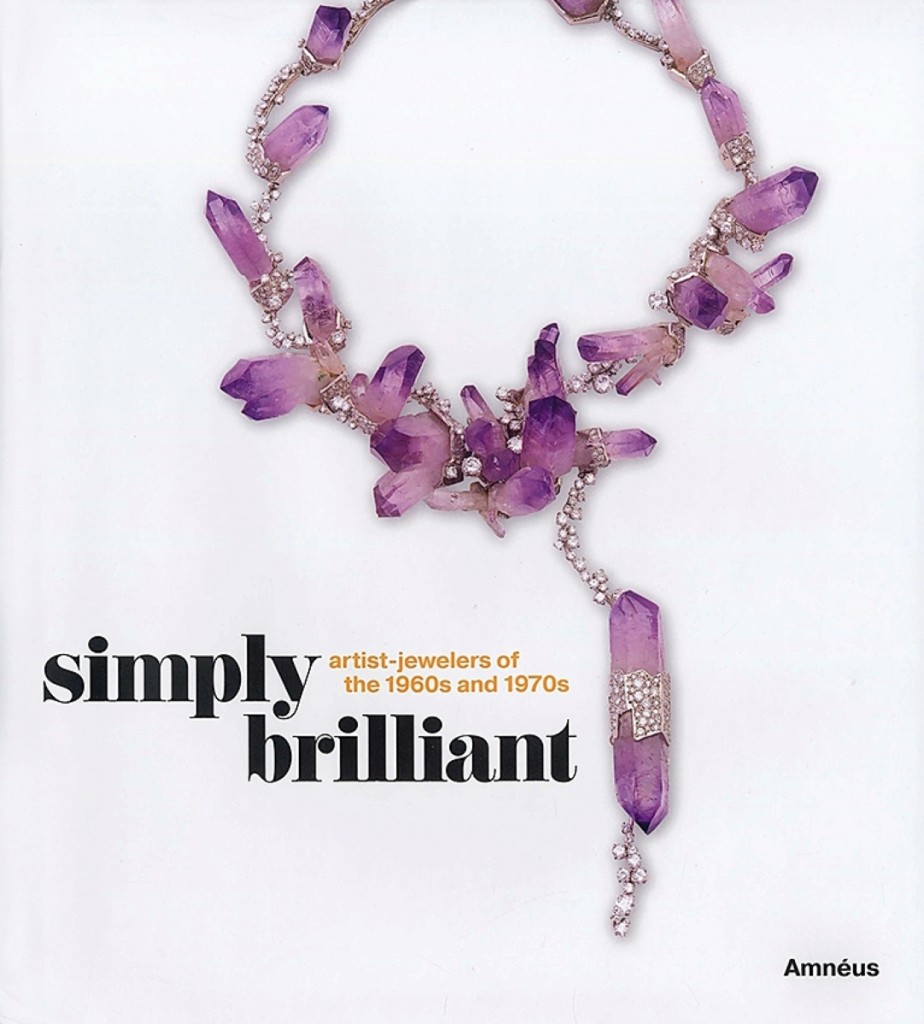
Simply Brilliant: Artist-jewelers of the 1960s and 1970s, edited by Cynthia Amnéus, Adam MacPhàrlain, Ruth Peltason, Rosemary Ransome Wallis and Amanda Triossi, Cincinnati Art Museum in association with D. Giles Limited, London; 2020; 256 pp; hardcover; $55.
Simply Brilliant is an exhibition catalog published a year before the exhibition of the same name will be on view at the Cincinnati Art Museum (October 22, 2021-February 6, 2022). The exhibition, which consists of approximately 120 pieces from the collection of Cincinnatian Kimberly Klosterman, reflects her interest in fine jewelry from the 1960s-70s. Reflected within is the work of international independent jewelers – 50 in total – such as Andrew Grima, Gilbert Albert, Arthur King, Theirry Vendome and Barbara Anton, along with the work made for other major jewelry houses such as Boucheron, Bulgari and Cartier. A chapter by Rosemary Ransome Wallis, former art director and curator at The Worshipful Company of Goldsmiths, London, titled “The International Exhibition of Modern Jewellery 1890-1961” establishes the context that fostered an environment of creativity even after the austerity that followed World War II. Independent jewelry historian Amada Triossi deftly identifies the cultures behind jewelry houses that saw the retailing potential of hiring jewelry designers in her chapter “Cross Fertilization, From Jewelers to Jewelry Houses.” In “The Art of Fashion and Jewelry,” editor of the book, chief curator and curator of fashion arts and textiles at the museum, Cynthia Amnéus clearly identifies the aesthetic of the jewelry of the time while the final chapter – an interview with Kimberly Klosterman – puts a final personal touch behind the collection.
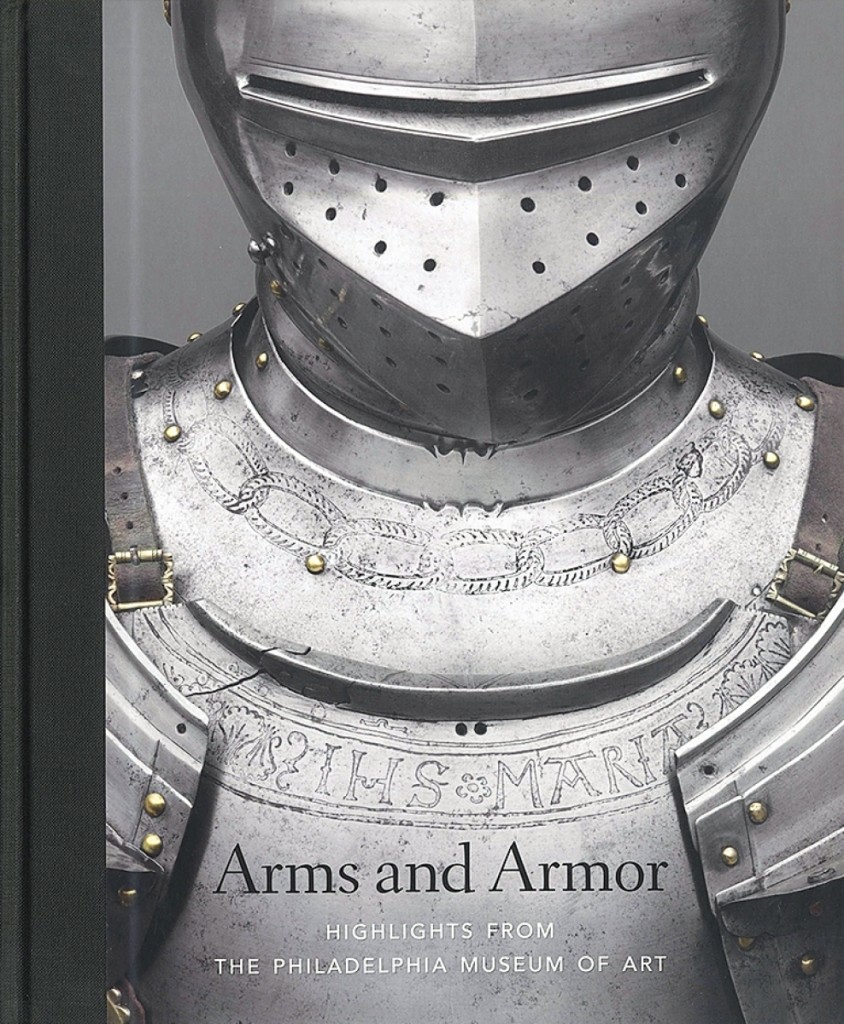
Arms and Armor, Highlights from the Philadelphia Museum of Art, Dirk H. Breiding, Philadelphia Museum of Art in association with Yale University Press, New Haven, Conn., and London; 2020; 312 pp; hardcover, $45.
This large abundantly illustrated volume by Dirk Breiding, the J.J. Medveckis associate curator of arms and armor at the Philadelphia Museum of Art, combines academic catalog and coffee-table book. A short yet comprehensive essay titled “Arms and Armor at the Philadelphia Museum of Art” gives a necessary and interesting history of both collecting the category and the collection at the museum. This provides a jumping off point for a catalog of 99 entries of highlights in the museum’s encyclopedic collection, with comparable examples pulled not only from throughout the museum but also from institutions and private collections around the world. Not only does the book discuss the core of the collection, which consists of a bequest in 1977 by connoisseur and scholar Carl Otto Kretzschmar von Kienbusch (1884-1976) but provides an opportunity for many works to be published in color for the first time. A seemingly comprehensive list of references and glossary makes this book a likely page-turner, if not a necessary reference, for arms and armor connoisseurs of any age.
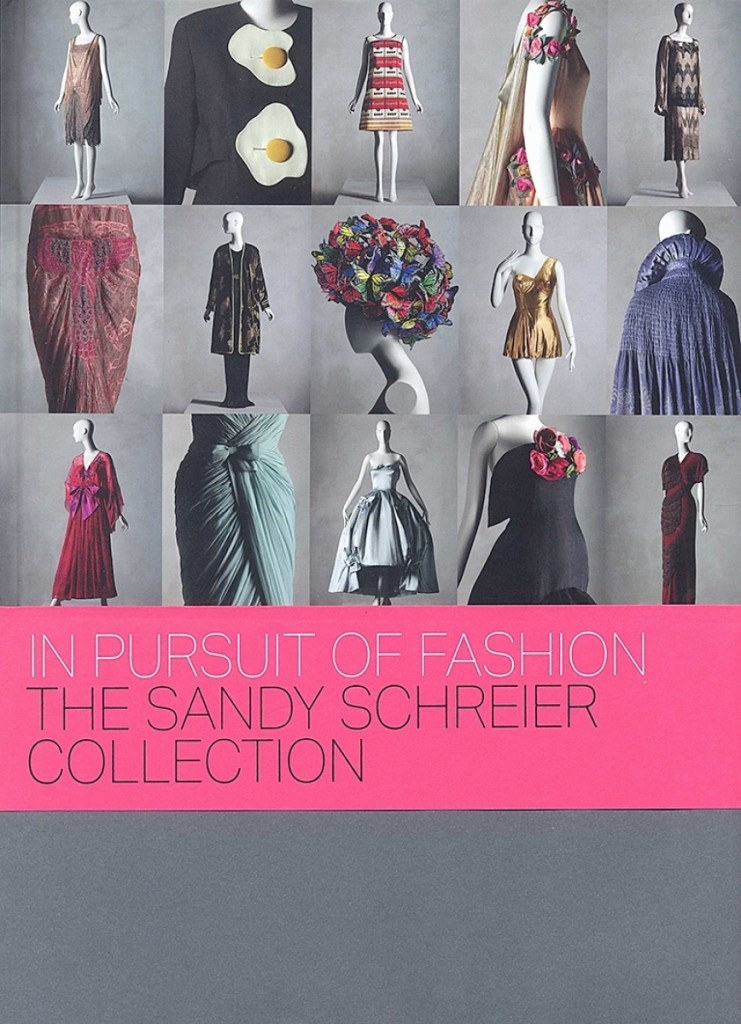
In Pursuit of Fashion: The Sandy Schreier Collection, Andrew Bolton, Jessica Regan and Mellissa Huber, with photographs by Nicholas Alan Cope, the Metropolitan Museum of Art, New York City; distributed by Yale University Press, New Haven, Conn., and London; 2020; 204 pp; hardcover; $50.
Got a fashionista on your holiday shopping list? Look no further than this lavishly illustrated volume that shows about half of a gift made to the Costume Institute at the Metropolitan Museum of Art in 2019 by Detroit, Mich., fashion collector, Sandy Schreier. The catalog was published in conjunction with the exhibition of the same name, “In Pursuit of Fashion: The Sandy Schreiner Collection,” which was on view at the Metropolitan Museum of Art in New York City from November 27, 2019 through May 17, 2020, an exhibition run that ended prematurely because of Covid-19. Not only does Schreier add more pieces by noted fashion designers such as Cristobal Balenciaga, Christian Dior and Gilbert Adrian to the museum’s collection but it expands it with works by designers who had been either minimally or not at all represented previously. Through this book, readers may learn for the first time of Augustabernard (working 1923-1934), Beer (circa 1890-1928), Margaine-Lacroix (active circa 1889-1929), Madeleine & Madeleine (1919-1926) and Premet (active circa 1911-1940s). Prefaced by Andrew Bolton, the Wendy Yu Curator in Charge, and introductions and chapters by associate curator, Jessica Regan, and assistant curator, Mellissa Huber, the book concludes with a lively interview between Schreier and Bolton.
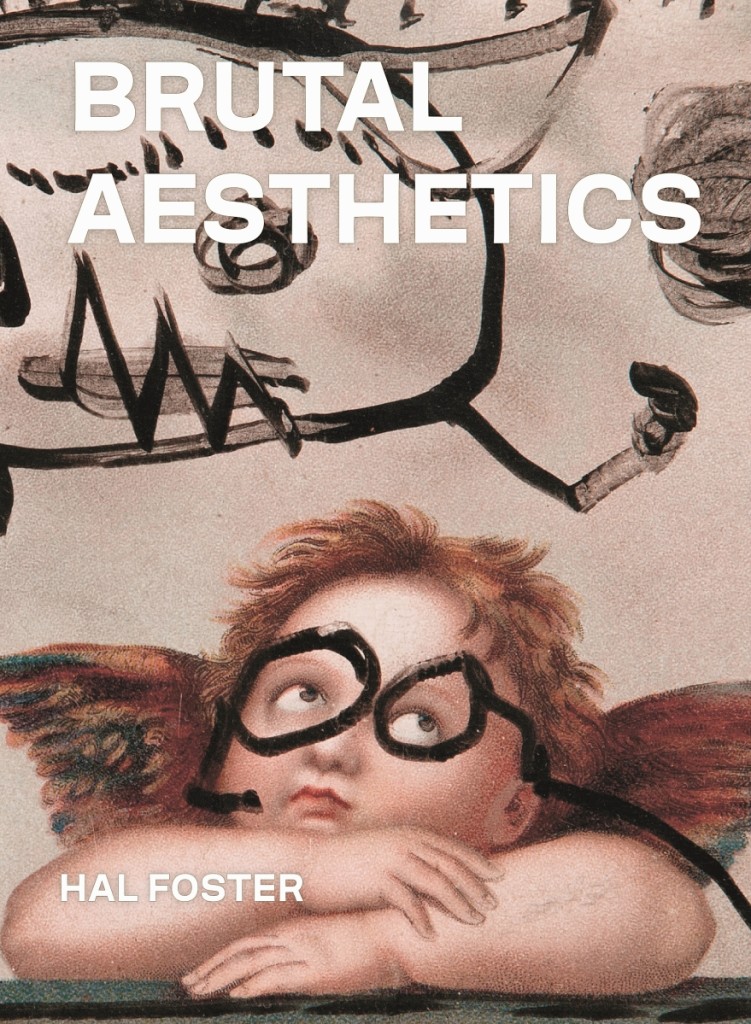
Brutal Aesthetics, Hal Foster, Princeton University Press, in association with the National Gallery of Art, Princeton, N.J.; 2020; 296 pp; hardcover; $40.
In Brutal Aesthetics, art historian and professor Hal Foster explores how postwar artists and writers searched for a new foundation of culture after the massive devastation of World War II, the Holocaust and the atomic bomb. Inspired by the notion that modernist art can teach us how to survive a civilization become barbaric, Foster examines the various ways that key figures from the early 1940s to the early 1960s sought to develop a “brutal aesthetics” adequate to the destruction around them. With a focus on the philosopher Georges Bataille, the painters Jean Dubuffet and Asger Jorn, and the sculptors Eduardo Paolozzi and Claes Oldenburg, Foster investigates a manifold move to strip art down, or to reveal it as already bare, in order to begin again. What does Bataille seek in the prehistoric cave paintings of Lascaux? How does Dubuffet imagine an art brut, an art unscathed by culture? Why does Jorn populate his paintings with “human animals”? What does Paolozzi see in his monstrous figures assembled from industrial debris? And why does Oldenburg remake everyday products from urban scrap? A study of artistic practices made desperate by a world in crisis, Brutal Aesthetics is an account of a difficult era in Twentieth Century culture, one that has important implications for our own.
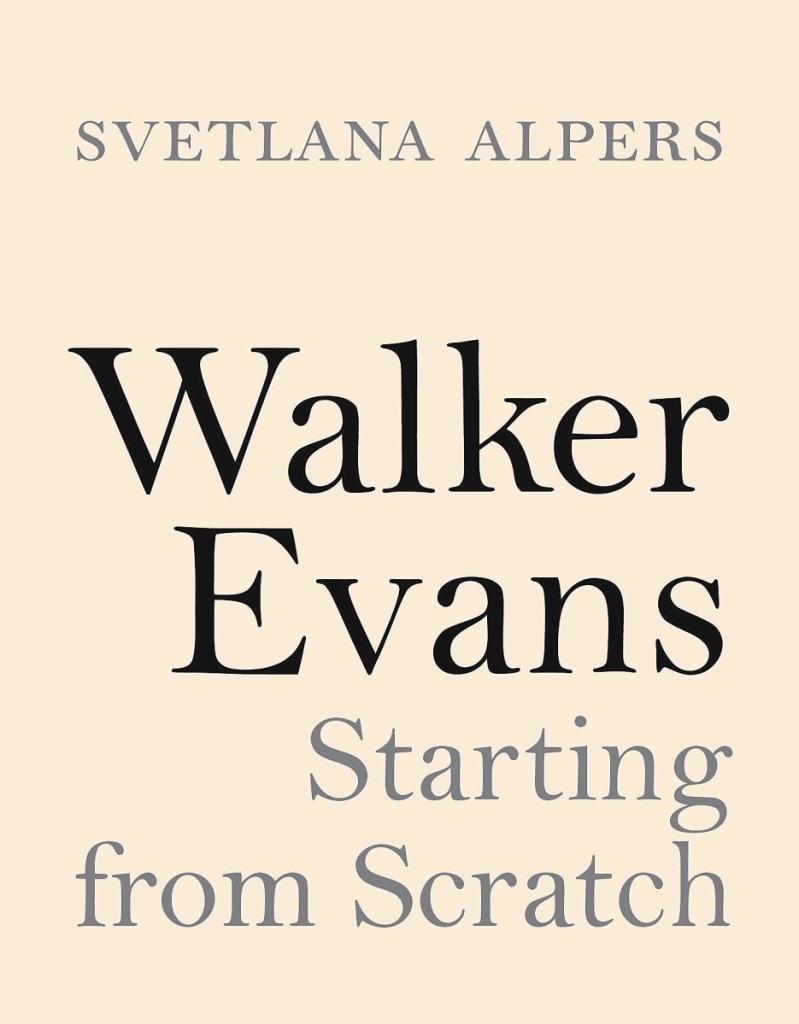
Walker Evans: Starting from Scratch, Svetlana Alpers, Princeton University Press, Princeton, N.J.; 2020; 208 pp; hardcover; $40.
Walker Evans (1903-1975) was an American artist photographing people and places in the United States in unforgettable ways. He is known for his work for the Farm Security Administration, addressing the Great Depression, but what he actually saw was the diversity of people and the damage of the long Civil War. In Walker Evans: Starting from Scratch, art historian Svetlana Alpers explores how Evans related to the craft of photography. Alpers documents how Evans left dreams of being a writer to become a photographer, how he saw photography as a fresh act of looking, and how photography as a particularly American medium helped Evans capture a nation starting over. Alpers also brings Evans’s techniques into dialogue with the work of a global cast of important artists – from Flaubert and Baudelaire to Elizabeth Bishop and William Faulkner – underscoring how Evans’ travels abroad informed his quintessentially American photographic style. The book includes a front gallery of more than 170 images from Evans’ travels abroad in such places as France and Cuba, as well as his canonical work in American South and New York City.
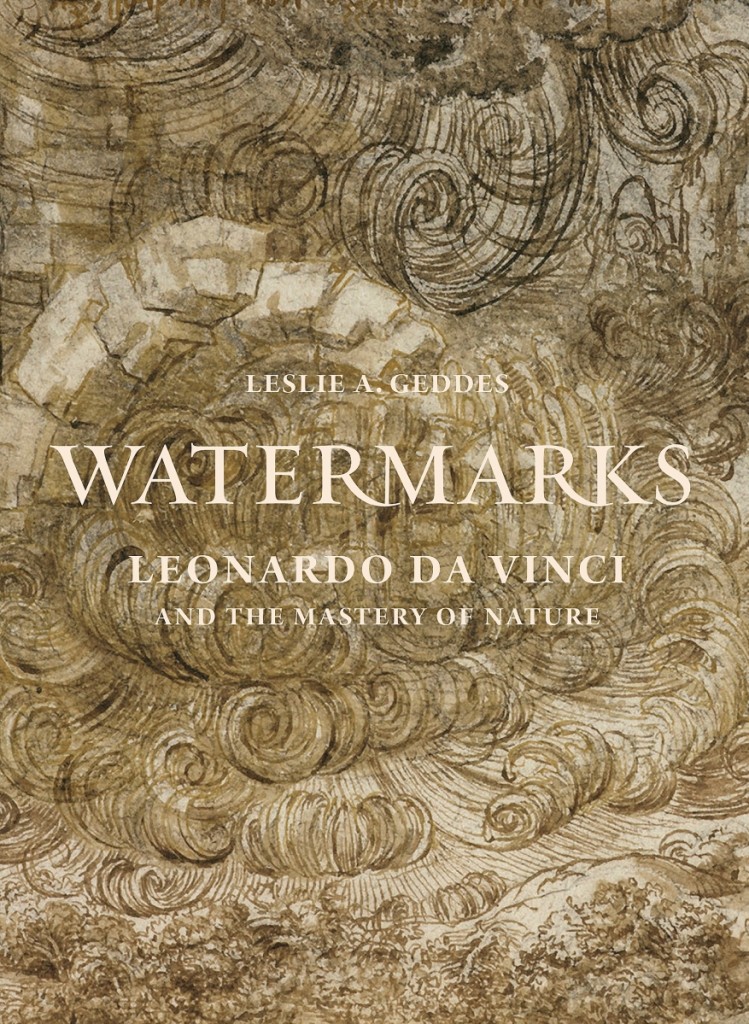
Watermarks: Leonardo da Vinci and the Mastery of Nature, Leslie A. Geddes, Princeton University Press, Princeton, N.J., 2020; 256 pp; hardcover; $60.
Formless, mutable, transparent: the element of water posed major challenges for the visual artists of the Renaissance. To the engineers of the era, water represented a force that could be harnessed for human industry but was equally possessed of formidable destructive power. For Leonardo da Vinci, water was an enduring fascination, appearing in myriad forms throughout his work. In Watermarks, Geddes explores the broad range of Leonardo’s interest in water and shows how artworks by him and his peers contributed to hydraulic engineering and the construction of large river and canal systems. From drawings for mobile bridges and underwater breathing apparatuses to plans for water management schemes, Leonardo evinced a deep interest in the technical aspects of water. His visual studies of the ways in which landscape is shaped by water demonstrated both his artistic mastery and probing scientific mind. Analyzing Leonardo’s notebooks, plans, maps and paintings, Geddes argues that, for Leonardo and fellow artists, drawing was a form of visual thinking and problem solving essential to understanding and controlling water and other parts of the natural world. She also examines the material importance in this work of water-based media, namely ink, watercolor and oil paint.
An account of Renaissance art and engineering, Watermarks shows, above all else, how Leonardo applied his pictorial genius to water in order to render the natural world in all its richness and constant change.
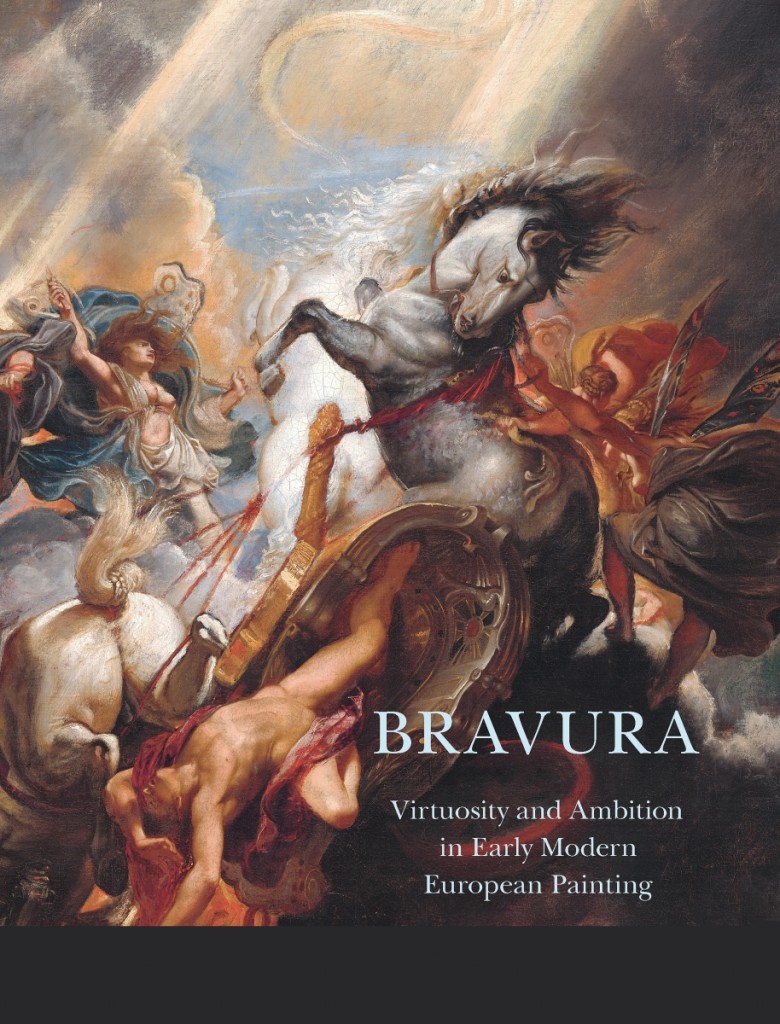
Bravura: Virtuosity and Ambition in Early Modern European Painting, Nicola Suthor, Princeton University Press, Princeton, N.J.; February 2021; 304 pp; hardcover; $65.
The painterly style known as “bravura” emerged in Sixteenth Century Venice and spread throughout Europe during the Seventeenth Century. While earlier artistic movements presented a polished image of the artist by downplaying the creative process, bravura celebrated a painter’s distinct materials, virtuosic execution, and theatrical showmanship. This resulted in the further development of innovative techniques and a popular understanding of the artist as a weapon-wielding acrobat, impetuous wunderkind, and daring rebel. In Bravura, Suthor offers the first in-depth consideration of bravura as an artistic and cultural phenomenon. Through history, etymology and in-depth analysis of works by such important painters as Francois Boucher, Caravaggio, Francisco Goya, Frans Hals, Peter Paul Rubens, Tintoretto and Diego Velázquez, Suthor explores the key elements defining bravura’s richness and power. Filled with images by painters testing the traditional boundaries of aesthetic excellence, Bravura raises questions about artistic performance and what it means to create art.

The Elements of Stress and the Pursuit of Happy-ish in this Current Sh*tstorm by Bob Eckstein & Michael Shaw, Humorist Books, www.humoristbooks.com, 2020; 90 pages; paperback; $7.99.
Things can’t get much worse – but they can get funnier. The Elements of Stress and the Pursuit of Happy-ish in this Current Sh*tstorm is a humorous handbook to help readers better deal with the challenges and headaches of our times, from overeating, to love problems, money woes, global warming, night sweats, winter itch, general anxiety, and so much more. Plus, more than 50 stress-defusing cartoons from two of the best gag cartoonists in the world will help readers handle all the anxiety in today’s new world disorder — the perfect gift for fans of the original Elements of Style or anyone who has had it up to here.
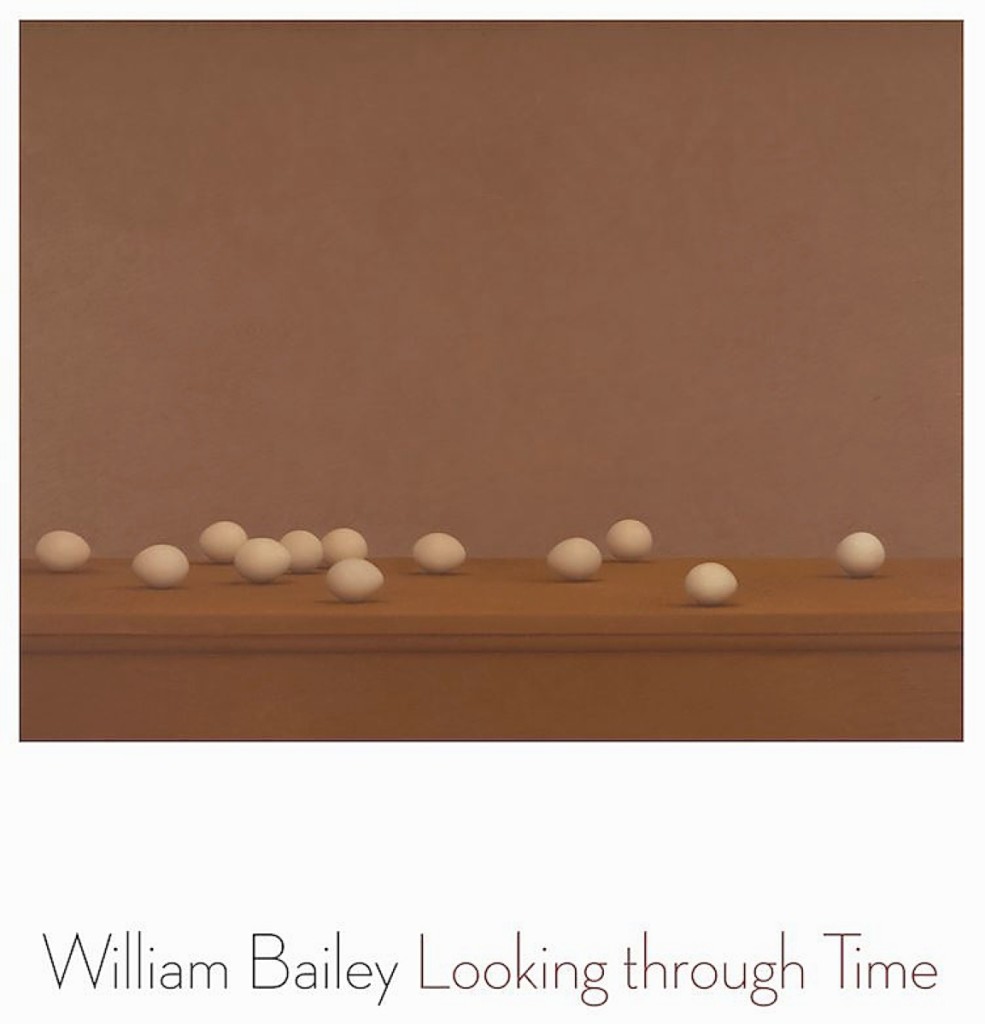
William Bailey: Looking Through Time by Mark D Mitchell; Yale University Art Gallery, https://artgallery.yale.edu; 2020; 110 pp, 60 color illustrations; hardcover; $45
This publication considers the work of William Bailey (1930-2020), the Kingman Brewster Professor of Art at Yale and one of the University’s most distinguished studio art faculty members since Josef Albers. Bailey’s career was marked by a dedication to representational painting – placing him alongside artists like Janet Fish, Audrey Flack, Alex Katz and Philip Pearlstein, who defied the prevailing taste for abstraction in the mid-Twentieth Century. From his many iterations of tabletop still life that began in the 1960s to his career-long commitment to the human figure, Bailey concentrated on the rudiments of representational art: form, color, line, medium, surface and light. His artistic inspirations spanned centuries, from Raphael and Piero della Francesca to Giorgio de Chirico, Giorgio Morandi and Piet Mondrian, with Jean-Auguste-Dominique Ingres and Paul Cézanne in between. Published to commemorate a retrospective exhibition held at the Yale University Art Gallery, this book is the first survey of his work in nearly 30 years. Full-color plates capture the meditative quality of his paintings, drawings and prints; special attention is given to his still life paintings in oil, such as the gallery’s “Still Life – Table with Ochre Wall” of 1972. Two in-depth essays offer complementary perspectives on Bailey’s work, and an interview with the artist by his former student Clifford Ross captures his voice and vision. While Bailey is revered by generations of Yale graduates, this volume introduces him to a deservedly wider audience and offers a new foundation for the study of his art.
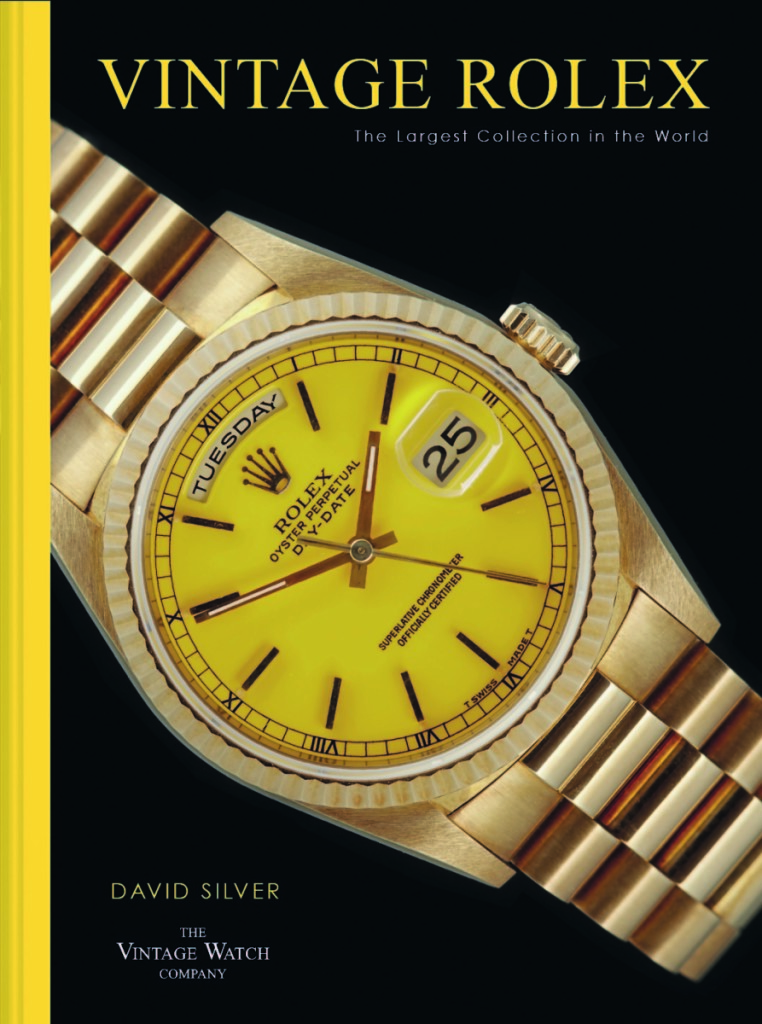
Vintage Rolex: The Largest Collection In The World by David Silver, Pavilion Books, distributed by Rizzoli, www.rizzoliusa.com, 2020; 384 pages and 75 color photographs; hardcover; $100.
For more than a century, Rolex has stood apart as the most legendary brand of watch in the world. Ever the record setter – Paul Newman’s Daytona was auctioned by Phillips in New York in October 2017 for $17.8 million – it should come as no surprise that Rolex is the most coveted of vintage watches in the world.
Published to celebrate the Vintage Watch Company’s 25th anniversary, the book contains larger-than-life-sized photographs of vintage Rolex watches that have passed through the shop over those years. From early Rolex pocket watches to the world’s first wristwatches, elegant in their simplicity yet revolutionary in their impact, to the very first Submariners, iconic Daytonas and jewel-encrusted Crown collections, the unparalleled archive of vintage timepieces charts the extraordinary rise of a brand coveted by collectors the world over.
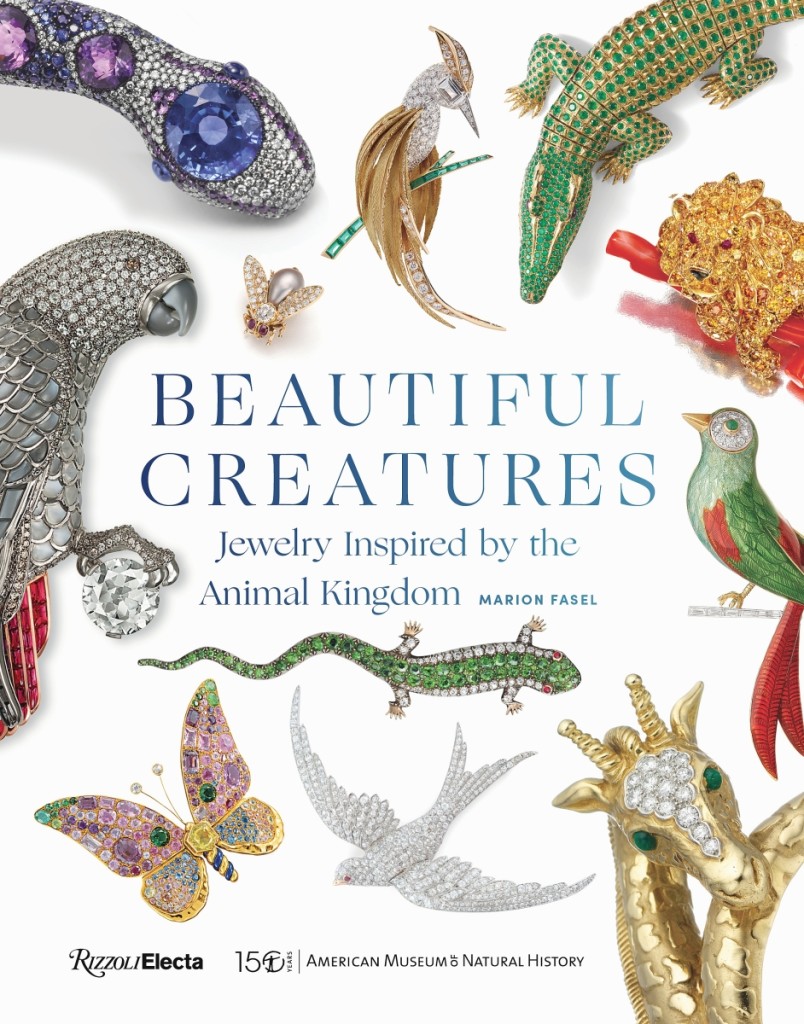
Beautiful Creatures: Jewelry Inspired By The Animal Kingdom by Marion Fasel, Rizzoli Electa in association with the American Museum of Natural History, www.rizzoliusa.com, 2020; 160 pages with 120 color and B&W illustrations; hardcover; $35.
From Cartier’s iconic panthers to Bulgari’s snakes and JAR’s butterflies, some of the most imaginative designs by the world’s great jewelry houses and artisans take inspiration from the animal kingdom, creating spectacular objects dripping with precious stones to conjure wearable art.
Beautiful Creatures: Jewelry Inspired by the Animal Kingdom depicts some of the most spectacular beasts ever transformed into sparkling treasures, many of which will be shown in an upcoming exhibition at New York’s American Museum of Natural History. Curated by the book’s author, Marion Fasel, the exhibition will be featured in the redesigned Allison and Roberto Mignone Halls of Gems and Minerals (now under construction), which will tell the story of the vast diversity of mineral types on Earth and how people have used them over millennia. The Mignone Halls of Gems and Minerals will include a new gallery space for rotating exhibitions, the Melissa and Keith Meister Gallery, with “Beautiful Creatures” as its first special exhibition.
The jewelry pieces featured in the book, dating from the mid-1800s to the present, are divided into three categories: Air – featuring butterflies, dragonflies, bees, birds and more; water – with fish, seahorses, crocodiles and starfish among others; and land, which dazzles with snakes, lizards, tortoises, panthers, tigers, elephants, giraffes, zebras and lions. Gorgeous studio photography of the jewelry is complemented by images of iconic personalities, including Elizabeth Taylor, Twiggy and María Félix, wearing famous animal-inspired jewels. Fasel relays the stories behind the individual pieces through entertaining anecdotes and reveals the colorful histories and fascinating symbolism of these remarkable creatures in precious gems.
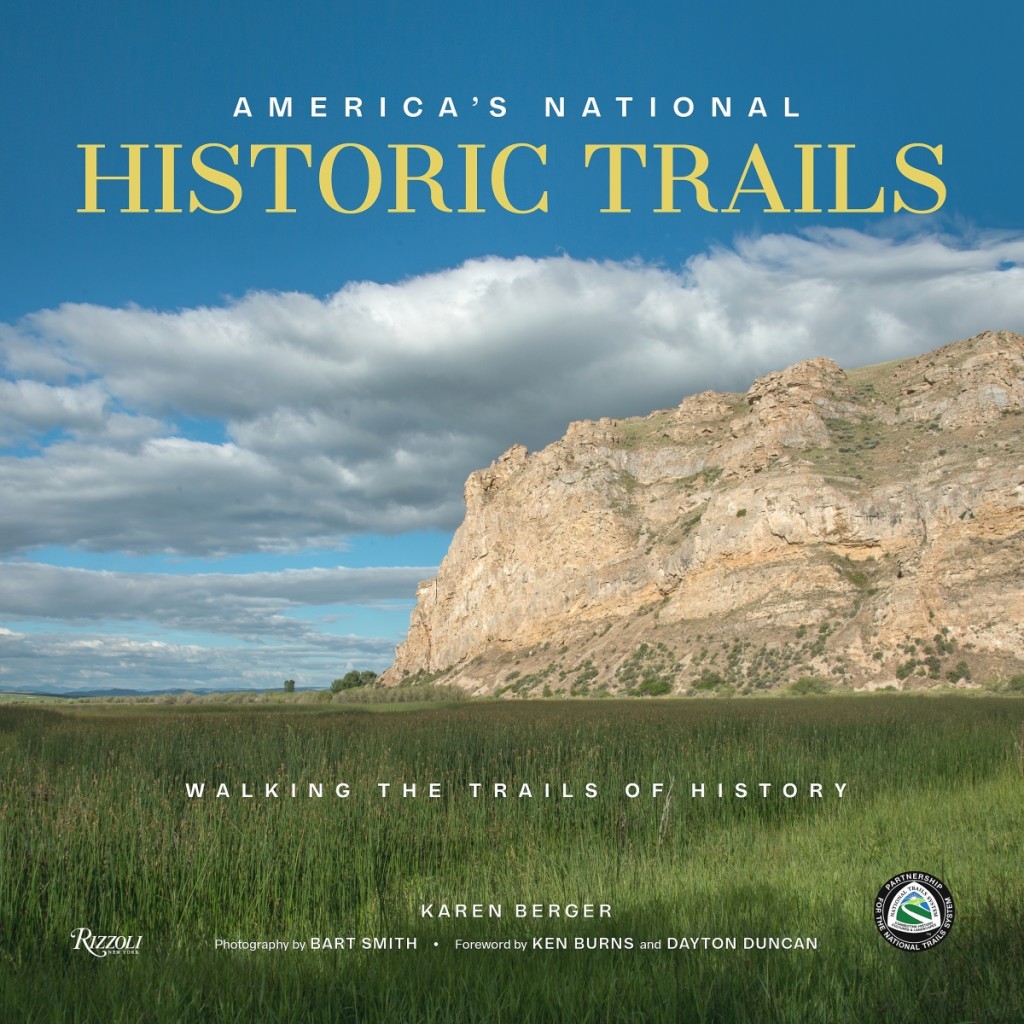
America’s National Historic Trails: In The Footsteps Of History by Karen Berger, photographs by Bart Smith; Rizzoli New York in association with the Partnership for the National Trails System; www.rizzoliusa.com; 2020; 320 pages with 325 color photographs; hardcover; $55.
From the battlefields of the American Revolution to the trails blazed by the pioneers, lands explored by Lewis and Clark and covered by the Pony Express to the civil rights marches of Selma and Montgomery, America’s National Historic Trails is a gift that celebrates the 19 trails that make up this system. These trails range from 54 miles to more than 5,000 and feature historic and interpretive sites to be explored on foot and sometimes by paddle, sail, bicycle, horse or car on backcountry roads. Totaling more than 37,000 miles through 42 states, our entire national experience comes to life on these trail – from American Indian history to the settlement of the colonies, westward expansion and civil rights – and they are beautifully depicted in this large-format volume with photography by Bart Smith.
As author Karen Berger writes in her introduction, “All of [the trails] offer opportunities to experience the varied environments that have played a role in the American narrative. But even more, these trails place us at the intersection of story and landscape. When we touch the wooden walls of a frontier fort, step in the ruts of wagon wheels, look down at a river from a bridge that wasn’t there a hundred years ago, or consider what it would be like to walk, ride a horse, drive a wagon or march in military formation over an expanse of land, we understand the past in a physical, visceral way. Our forebears passed through these lands for many different reasons: for freedom, for a king, for God, for a protest, for economic opportunity, for adventure, for war. We all have our reasons, both then and now. The national historic trails give us points of intersection across time and distance – a way to connect ourselves to those who came before through our common humanity and our experience of the land.”
-790x1024.jpg)
For Art’s Sake: Inside The Homes of Art Dealers by Tiqui Atencio Demirdjian, photographs by Jean-François Jaussaud; Rizzoli New York, www.rizzoliusa.com, 2020; 384 pages with 270 images; hardcover; $85.
From New York to London, Brussels to Los Angeles and Sao Paolo to Monaco, the private residences of the greatest and most illustrious names in the art world boast some of the world’s most outstanding art collections. Antique masterpieces, modern chefs d’oeuvre and contemporary creations are set against exquisite – and at times audacious – interiors exuding bold, unique style. Written by Tiqui Atencio Demirdjian, a leading collector of Modern and contemporary art and Twentieth Century design, For Art’s Sake gives readers unprecedented access to the homes of 24 of the world’s most prestigious art dealers.
A first of its kind, this elegant volume grants readers exclusive access to these houses and gives life to enthralling contrasts, echoes and unexpected dialogues by juxtaposing unparalleled art collections with interiors designed by the most renowned names, such as Annabel Selldorf, Peter Marino, François Marcq, Jacques Grange, Toshiko Mori and more.
The result is a gallery of striking beauty, most of which is revealed to the public eye for the very first time and captured by photographer Jean-François Jaussaud. Tiqui Atencio Demirdjian’s texts guide the reader through these private spaces, while excerpts from exclusive interviews with the spaces’ owners, such as Dominique Lévy, Brett Gorvy, Almine Rech Picasso, Barbara Gladstone, Kamel Mennour and Axel and May Vervoordt, enrich this must-have volume for all lovers of art and design.
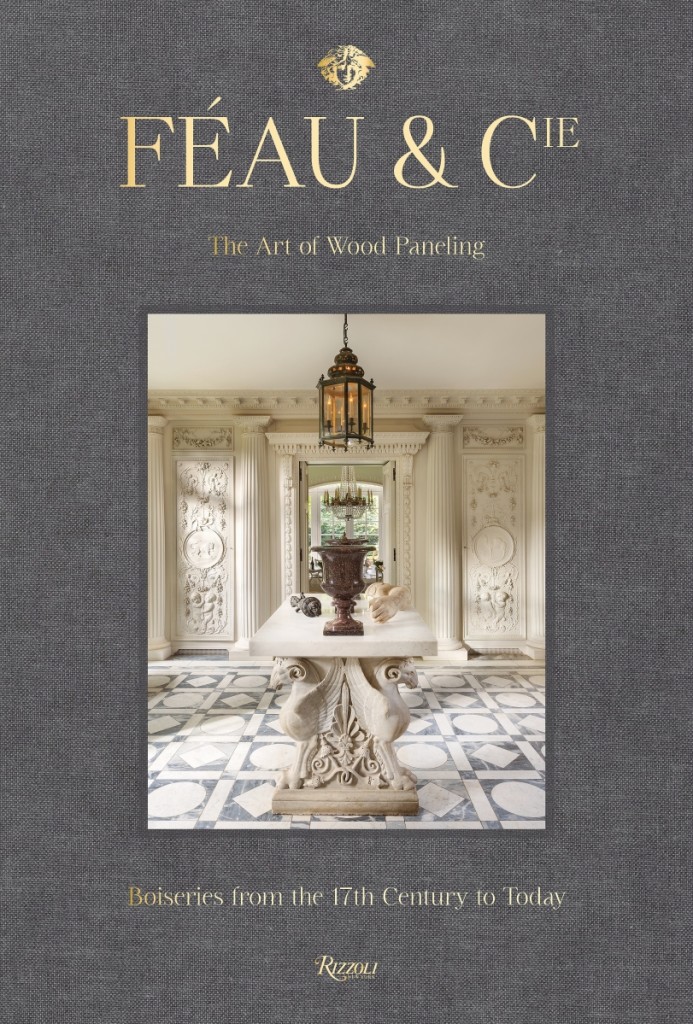
Féau & Cie: The Art Of Wood Paneling, Boiseries From The 17th Century To Today, Rizzoli New York, www.rizzoliusa.com; 2020; 288 pages with 200 color and B&W photographs; hardcover; $65.
The French woodwork purveyor Féu & Cie has supplied architects, designers and museums with period paneling since 1875. Featuring documents, drawings, plaster models, panels and antique boiserie rooms, its 25,000 piece archive – many from the Eighteenth Century and Art Deco era – was an unrivaled source of inspiration for recreating heirloom spaces, constructing spectacular contemporary installations, and was the unparalleled resource for creating Féau & Cie: The Art of Wood Paneling which documents the firm’s unrivaled history of excellence in this field.
Though the house of Féau & Cie remains best known for its historic rooms, it has collaborated with architects and decorators on original projects since its founding, and today’s design greats – including Michael S. Smith, Brian J. McCarthy and Robert Couturier, among others – regularly call upon the firm for elaborate projects for their most discerning clients.
In this title, Féau & Cie reveals a selection of its most exceptional undertakings, from magnificent historical homes to surprising modern creations, including a palace in Tuscany and residences in Paris, London, New York, Malibu and Atlanta. Dazzling images of 21 interiors are accompanied by exquisite details of panels, doors and decor, while exclusive photographs by Robert Polidori – who has a three-decade relationship working with the storied company – explore the house’s timeless Parisian atelier. The expertise of joiners, sculptors, gilders and painter-decorators shines through in this visual celebration which is bound to delight aficionados of incomparable interiors and the history of decorative arts.
-734x1024.jpg)
More Than Just A House: At Home With Collectors And Creators by Alex Eagle with Tish Wrigley, photography by Kate Martin; Rizzoli New York; www.rizzoliusa.com; 2020; 288 pages with 215 color photographs; hardcover; $50.
Wouldn’t it be amazing if we could knock on the most talented people’s doors and prowl through their homes for inspiration? Chosen and curated by London-based creative director Alex Eagle, this collection of more than 30 stylish interiors is the next best thing.
In More Than Just a House: At Home with Collectors and Creators, an exceptional group of creative contemporaries opens the doors to their lush and layered homes – original, charming and above all, authentic. With a spotlight on objects that personalize each home, this playful volume is rich in inspiration for creating that perfect blend of modern luxury and bohemian chic. Practicing what she preaches, Eagle’s light-filled loft in London’s Soho is a showhouse for the objects, vintage furniture and art she deals in at her boutique, where natural materials, rare books, original art and vintage furniture create the warmth and personality of a well-lived home.
The book pairs vibrant photos of interiors with texts about their owners’ worlds, providing insight into how these spaces embody unique ways of living, working and socializing. Eagle’s warm curation of her subjects and her personal relationships with each allows More Than Just a House to transcend the boundaries of a traditional interiors tome. About the project Eagle said, “This book was born from a feeling I often have when I am welcomed into a friend’s fabulous house. I look around and wish I could record my experience: not just the color of the walls or the art in the hallway, but the spirit of the place, the way the energy of the person who lives there is expressed in its singular style. I wanted to build a portrait of the best interiors of the moment filled with the personalities of the brilliant people who live there.”
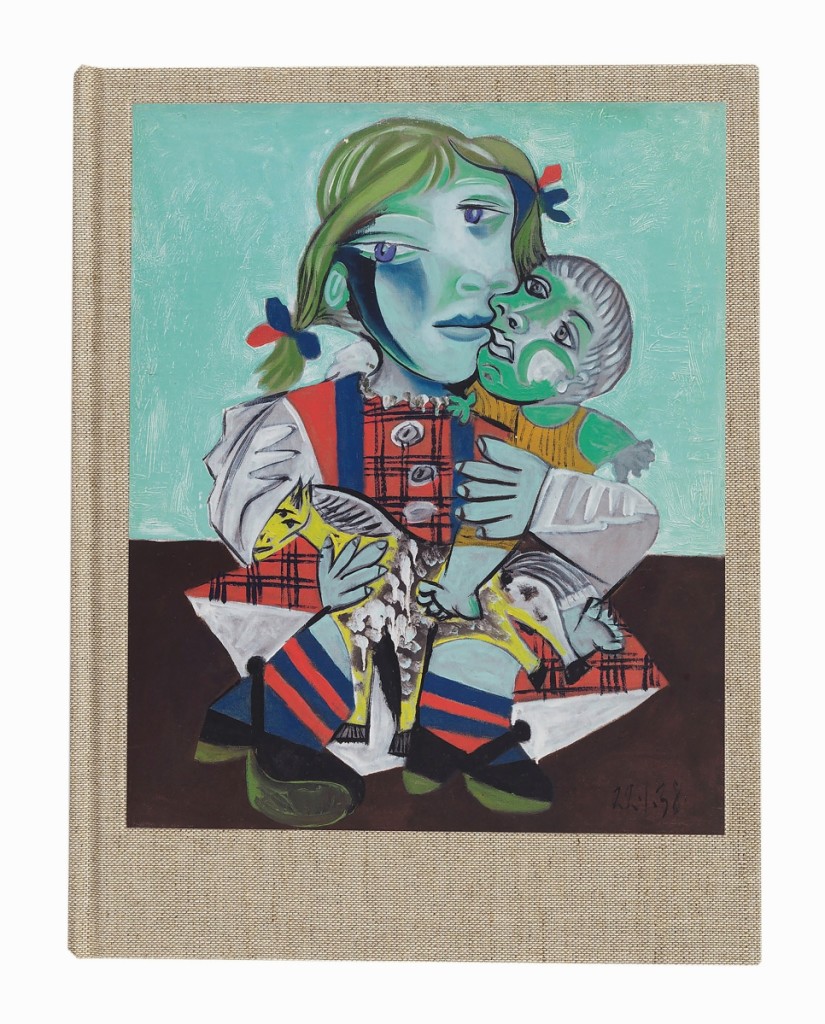
Picasso and Maya: Father and Daughter, edited by Diana Widmaier-Picasso with contributions by Pepe Karmel, Elizabeth Cowling, Carmen Gimenez and Maya Ruiz-Picasso; Gagosian/Rizzoli, www.rizzoliusa.com; 2020; 372 pages; hardcover; $200.
A comprehensive exploration and chronicle of Picasso’s depictions of his eldest daughter, Maya, and the relationship between father and child.
In 2016 and 2017, Diana Widmaier-Picasso curated two exhibitions for Gagosian: the first gathered works from the collection of her mother, Maya Ruiz-Picasso, Pablo Picasso’s beloved eldest daughter; and the second commemorated the relationship between Picasso and Maya. More than just a catalog of these two exhibitions, this book is a comprehensive reference publication that explores the figure of Maya throughout Picasso’s work and chronicles the relationship between the artist and his daughter. The volume features an intimate interview between Ruiz-Picasso and Widmaier-Picasso, along with archival photographs by Edward Quinn and from the Picasso family, many of which have never been published before.
New scholarly essays complete the publication, with contributions by distinguished Picasso scholars such as Elizabeth Cowling, Carmen Giménez and Pepe Karmel. A section of the book is devoted to Picasso’s plaster sculpture “La Femme Enceinte” (1959) and includes a discussion of Roe Ethridge’s vivid, specially commissioned photographs of this work.
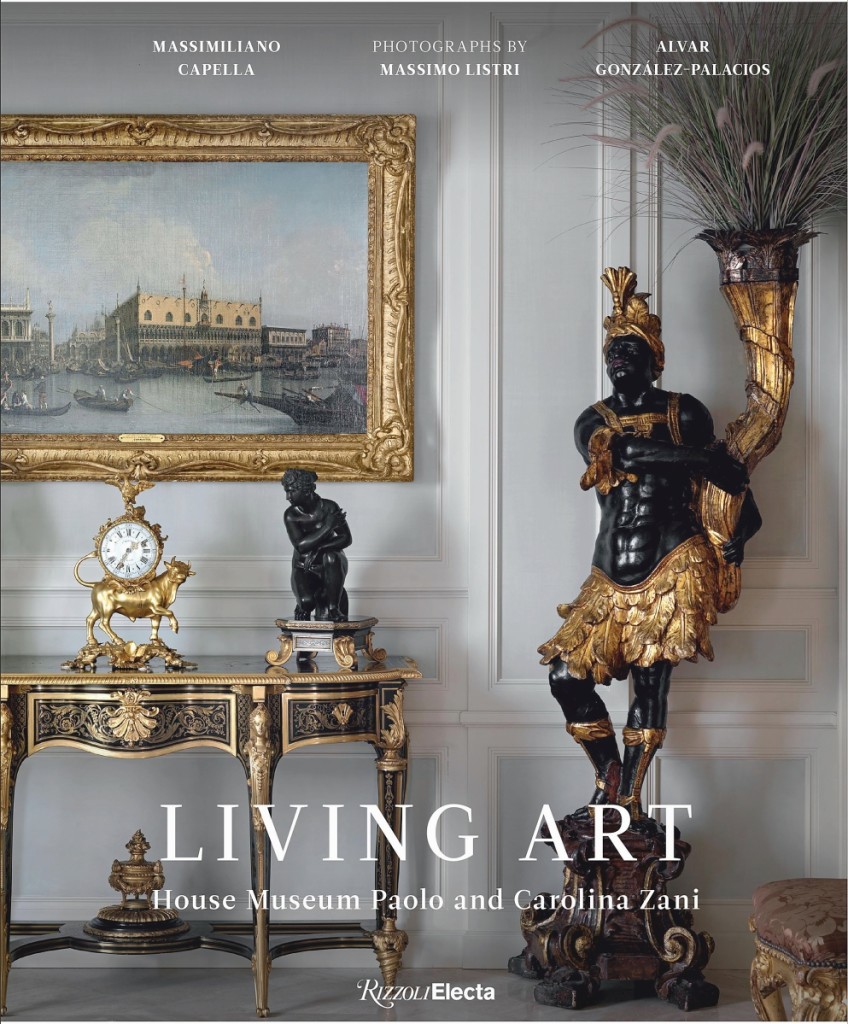
Living Art: House Museum Paolo and Carolina Zani with text by Massimiliano Capella and Alvar González-Palacios; Rizzoli Electa, www.rizzoliusa.com; 2020; 208 pages; hardcover; $35.
A colorful volume about an extraordinary house and art collection dating from the Seventeenth and Eighteenth Centuries.
Living Art tells the story of the collection of Paolo Zani (1945-2018), a renowned entrepreneur and a great art enthusiast. Over three decades, Zani collected more than 800 works at his home in Italy (Cellatica in Brescia) – which was designed and remodeled over time in order to accommodate them – including paintings, sculptures, examples of applied art and interior decor. Some of the outstanding masterpieces on display include works by Canaletto, Tiepolo, Guardi, Longhi and Boucher, along with exquisite Baroque and Rococo furnishings, which are mainly of French and Venetian origin, and extraordinary art objects from the Seventeenth and Eighteenth Centuries. These marvels are now being unveiled to the public at large thanks to this book and the opening of the House Museum. Zani’s decision to establish the Fondazione Paolo e Carolina Zani and breathe life into this project is motivated by his desire to keep this great artistic heritage intact, as well as to remember his daughter Carolina (1990-2017).
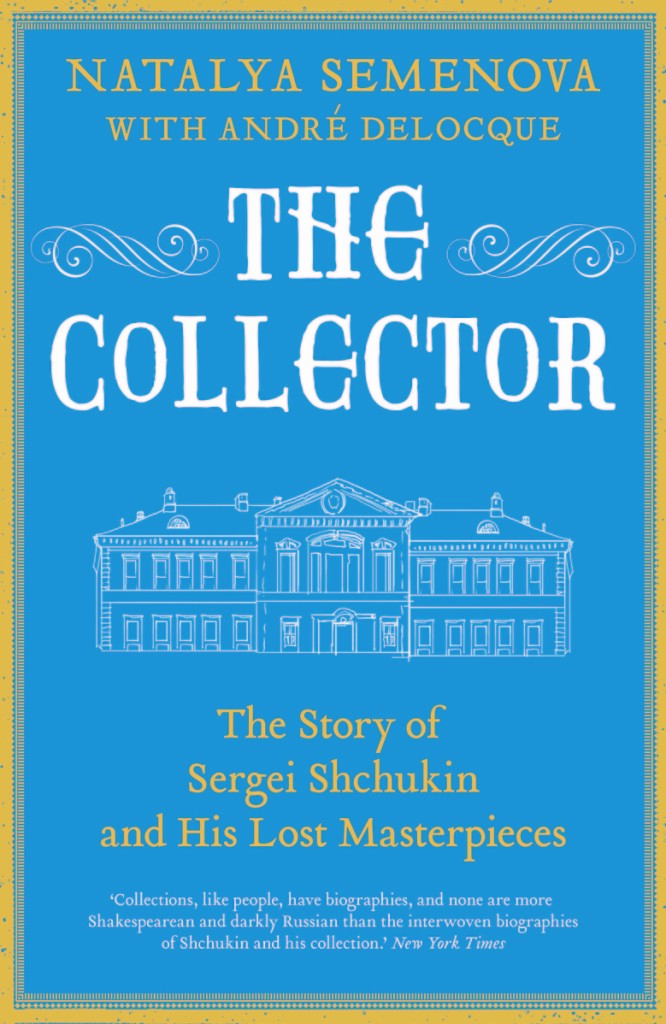
The Collector: The Story of Sergei Shchukin and His Lost Masterpieces by Natalya Semenova with André Delocque; Yale University Press, https://yalebooks.yale.edu/; 2020; 304 pages with 32 color and 3 black and white illustrations; paperback; $18.
Sergei Shchukin was a highly successful textiles merchant in the latter half of the Nineteenth Century, but he also had a great eye for beauty. He was one of the first to appreciate the qualities of the Impressionists and Post-Impressionists and to acquire works by Cézanne, Matisse and Picasso. A trailblazer in the Russian art world, Shchukin and his collection shocked, provoked and inspired awe, ridicule and derision among his contemporaries.
This, the first English language biography of Sergei Shchukin, features personal diary entries, correspondence, interviews and archival research, and brings to light the life of a man who has hitherto remained in the shadows. The Collector shows how despite his controversial reputation, Shchukin opened his collection to the public, inspiring a future generation of artists and changing the face of the Russian art world.
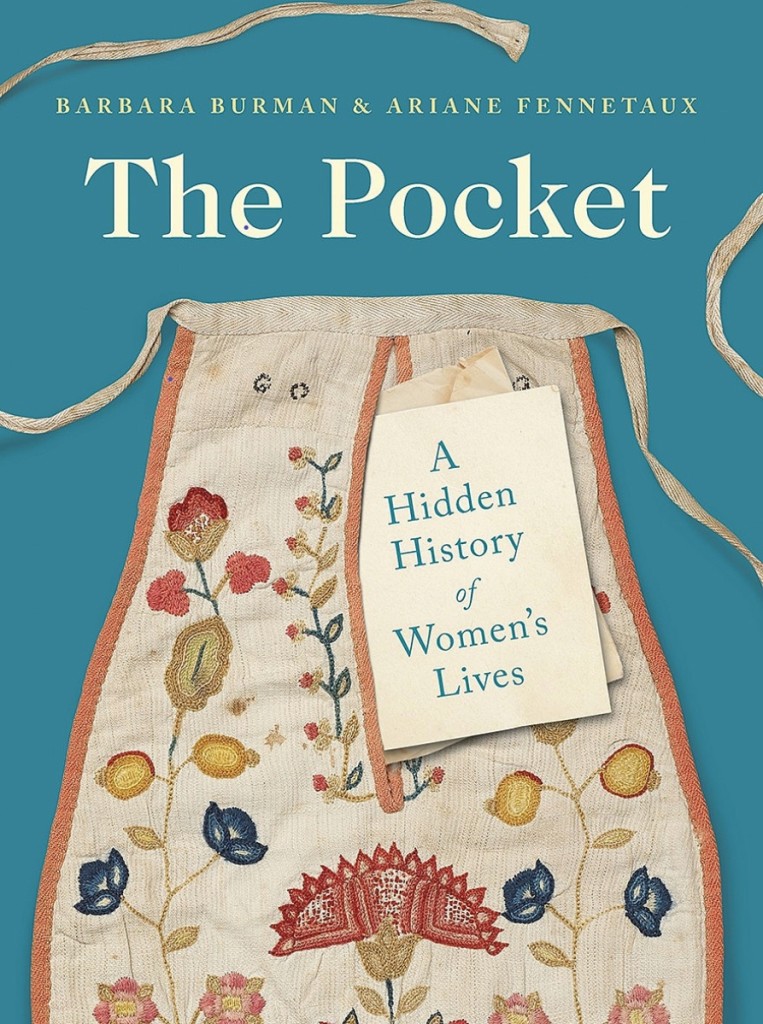
The Pocket: A Hidden History Of Women’s Lives, 1660-1900 by Barbara Burman and Ariane Fennetaux; Yale University Press; https://yalebooks.yale.edu/; 2020; 264 pages with 200 color illustrations; paperback; $25.
This fascinating and enlightening study of the tie-on pocket combines materiality and gender to provide new insight into the social history of women’s everyday lives – from duchesses and country gentry to prostitutes and washerwomen – and to explore their consumption practices, sociability, mobility, privacy and identity. A wealth of evidence reveals unexpected facets of the past, bringing women’s stories into intimate focus.
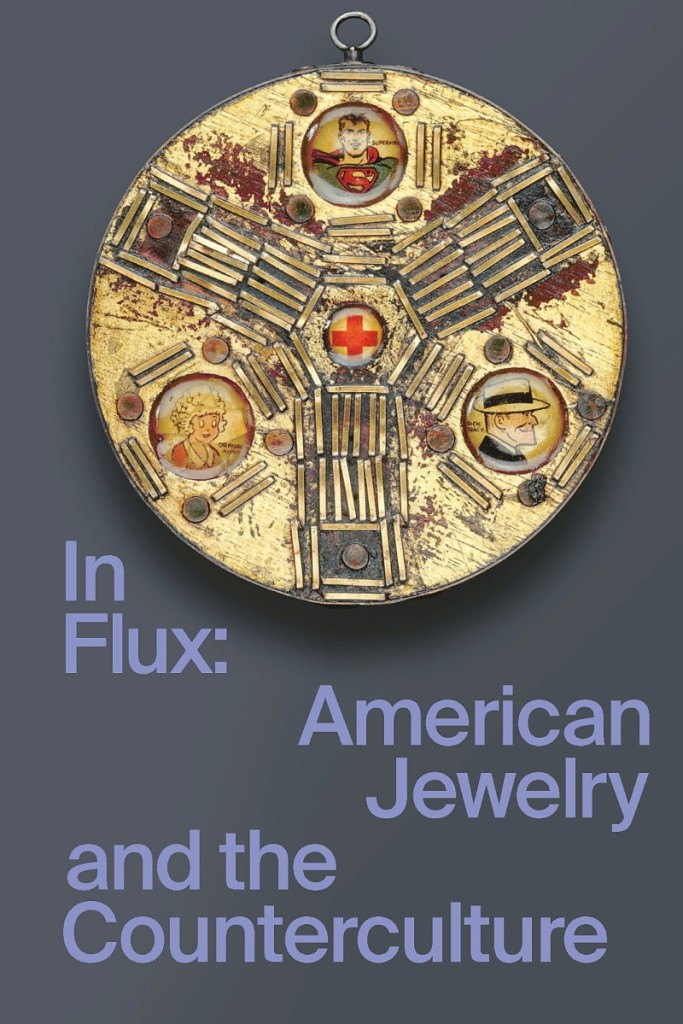
In Flux: American Jewelry and the Counterculture by Susan Cummins, Damian Skinner and Cindi Strauss; Arnoldsche Art Publishers, https://arnoldsche.com; 2020; 184 pages; flexbind; $50.
In Flux provides revealing insights into the highly dynamic period of American studio jewelry and contextualizes the political jewelry of its time with world events and the rise of the counterculture associated with it. A fascinating book for all those interested in art jewelry and more recent American cultural history.
In the 1960s-70s, a generation of young Americans rejected the promise of prosperity and the suburban dream embraced by their parents. Opposed to the war in Vietnam, they also fought for civil rights at home, explored psychedelic drugs and discovered the delights of free love and the mystical teachings of eastern religions. Thousands followed the advice to “turn on, tune in, drop out” and in doing so created an alternative blueprint to the mainstream, a counterculture that would go on to bring about lasting change, not just to American society.
This evolution found its way into the studio of many American jewelers, affecting the way they lived, loved and worked. The handcrafted and authentic postulated by the counterculture soon went on to inform studio jewelry. The works hold a mirror up to American history and Pop culture in equal measure, addressing US warfare and sexual liberation. On the other hand, Native American and Afro American influences are reflected in their aesthetic and choice of materials. They are counter-narratives that become public statements in the form of rings, bangles, brooches and necklaces.
Attractively designed with visual references to the time, the essays in this richly illustrated book tell of how this jewelry contributed to the contradictory and enthusiastic clamor for a new kind of society, one which made the 1960s-70s so extraordinary. It also sheds light on the imaginative worlds and working methods of many well-known and rediscovered American jewelry designers. An approach to an America in the time of the Vietnam War, Woodstock and free love, seen from a hitherto uncharted perspective.
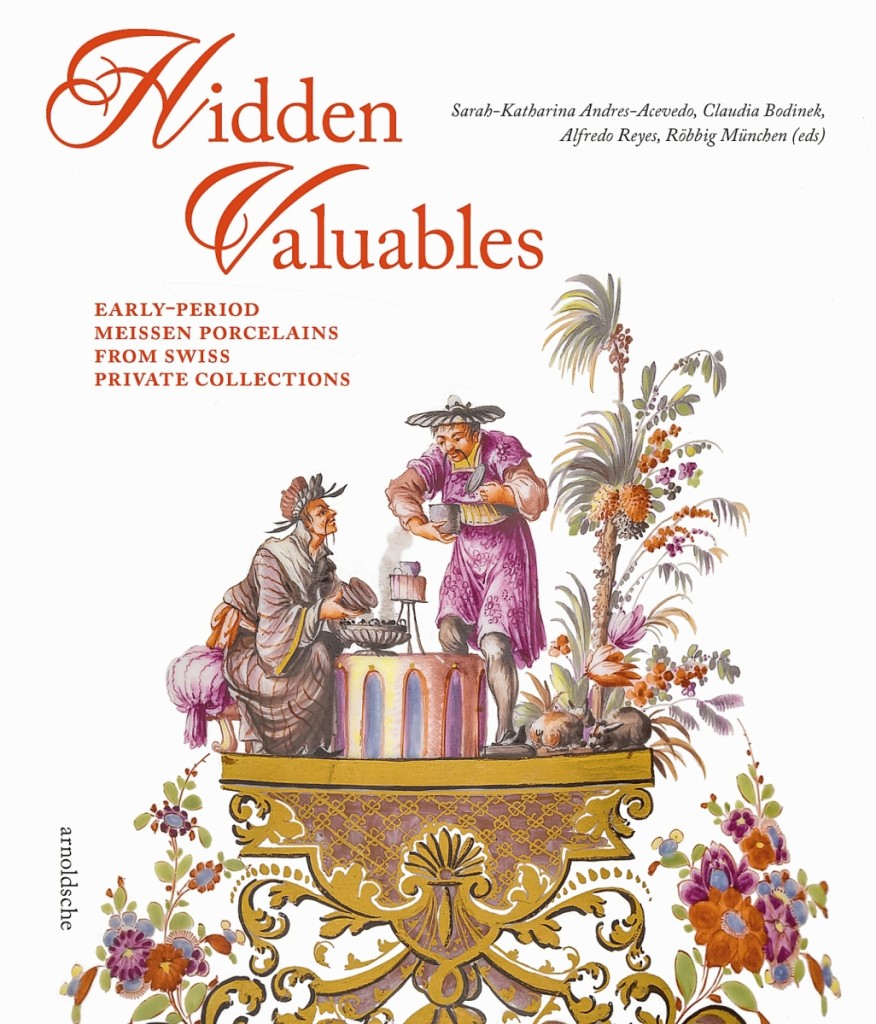
Hidden Valuables: Early-Period Meissen Porcelains from Swiss Private Collections by Sarah-Katharina Andres-Acevedo, Claudia Bodinek, Alfredo Reyes, Röbbig München; Arnoldsche Art Publishers, https://arnoldsche.com; 2020; 608 pages with 605 illustrations; hardcover; $135.
Switzerland is well-known for its host of remarkable collections of Eighteenth Century European porcelain. Exemplary representatives of these are such extraordinary collector personalities as Albert Kocher or Dr Marcel Nyffeler. A number of these magnificent collections can be found today – as a result of endowments or gifts – in Switzerland’s renowned institutions. Today the “white gold” from Saxony still fascinates Swiss connoisseurs: this publication is dedicated to their passionate collecting and exceptional treasures and is enriched by articles by renowned art historians and porcelain experts. An impressive overview of the gems of the most sumptuous Meissen porcelain of the early period.
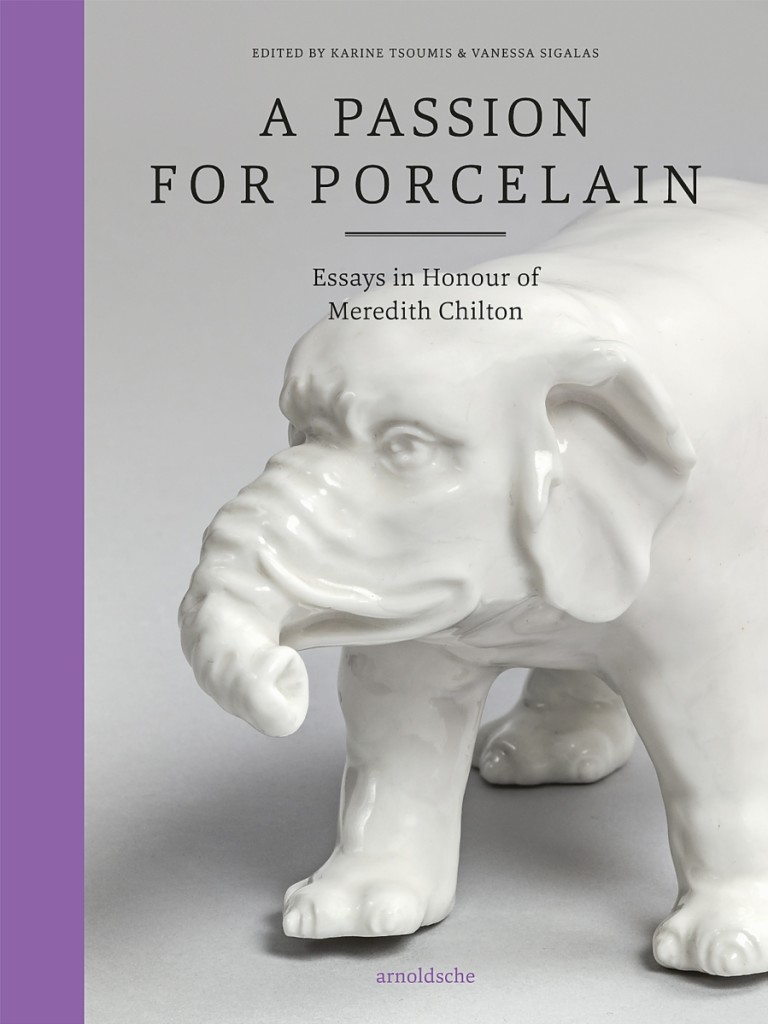
A Passion For Porcelain, edited by Karine Tsoumis and Vanessa Sigalas, essays in honor of Meredith Chilton; Arnoldsche Art Publishers, https://arnoldsche.com; 2020; 208 pages with 165 illustrations; hardcover; $65.
In 2018, a symposium titled “A Passion for Porcelain” was held in scholar, curator and author, Meredith Chilton’s honor at the Gardiner Museum in Toronto, Canada, with associates of many years’ standing as well as a newer generation of leading porcelain experts.
The essays, now brought together in a publication of the same name, take the reader on a Grand Tour of Vienna and Dresden via Sèvres and Boston to Nabeshima, Japan. Along the way they make the acquaintance of established artists, get to know anonymous producers and follow the trails of passionate collectors.
Alongside the actual history of “white gold” and its multifarious design possibilities, the essays, which are arranged by location, also explore cultural historical connections: from the secret recipe that ultimately found its way to the European royal courts, via dramatic artistic rivalries and the alchemistic production of individual workshop managers, to the – private or political – relationships that porcelain generated or maintained.
In doing so, the full spectrum of porcelain becomes palpable: in competitions in art, as an object of fashion and scholarly curiosity, as well as a symbol of status and power. Not least, the delicately formed figurines, the opulent decorated services, the modern-looking plates, and rooms clad entirely in “white gold” also chronicle a very special aspect of porcelain – its status as an object of desire.
This passion for porcelain continues to the present day and unfolds in all its intensity in this illustrated publication. A beautifully designed book and an illustrated scholarly expedition through the multifaceted world of baroque porcelain in honor of one of the greatest luminaries of European porcelain history.
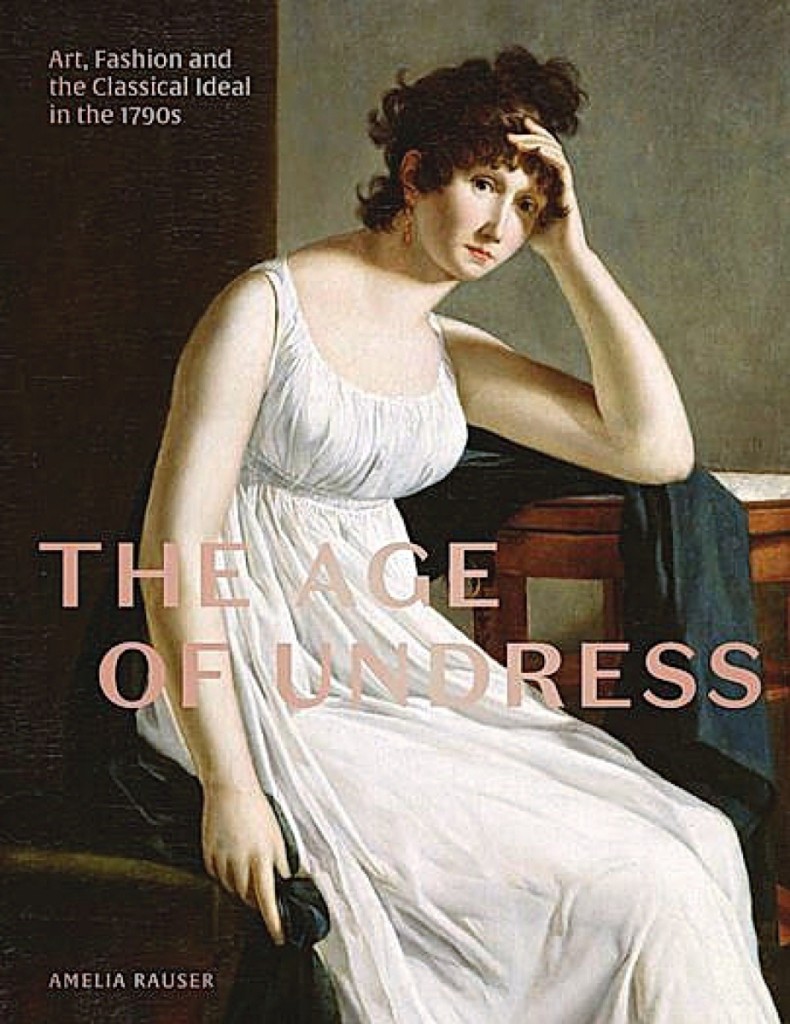
The Age of Undress: Art, Fashion and the Classical Ideal in the 1790s by Amelia Rauser; Yale University Press, https://yalebooks.yale.edu/; 2020; 216 pages with 180 color illustrations; hardcover; $50.
Neoclassicism recast as a feminine, progressive movement through the lens of empire-style fashion, as well as related art and literature.
The Age of Undress explores the emergence and meaning of neoclassical dress in the 1790s, tracing its evolution from Naples to London and Paris over the course of a single decade. The neoclassical style of clothing – often referred to as robe à la grecque, empire style, or “undress” – is marked by a sheer, white, high-waisted muslin dress worn with minimal undergarments, often accessorized with a cashmere shawl. This style represented a dramatic departure from that of previous decades and was short lived: by the 1820s, corsets, silks and hoop skirts were back in fashion.
Amelia Rauser investigates this sudden transformation and argues that women styled themselves as living statues, artworks come to life, an aesthetic and philosophical choice intertwined with the experiments and innovations of artists working in other media during the same period. Although neoclassicism is often considered a cold, rational and masculine movement, Rauser’s analysis shows that it was actually deeply passionate, with women at its core – as ideals and allegories, as artistic agents, and as important patrons.
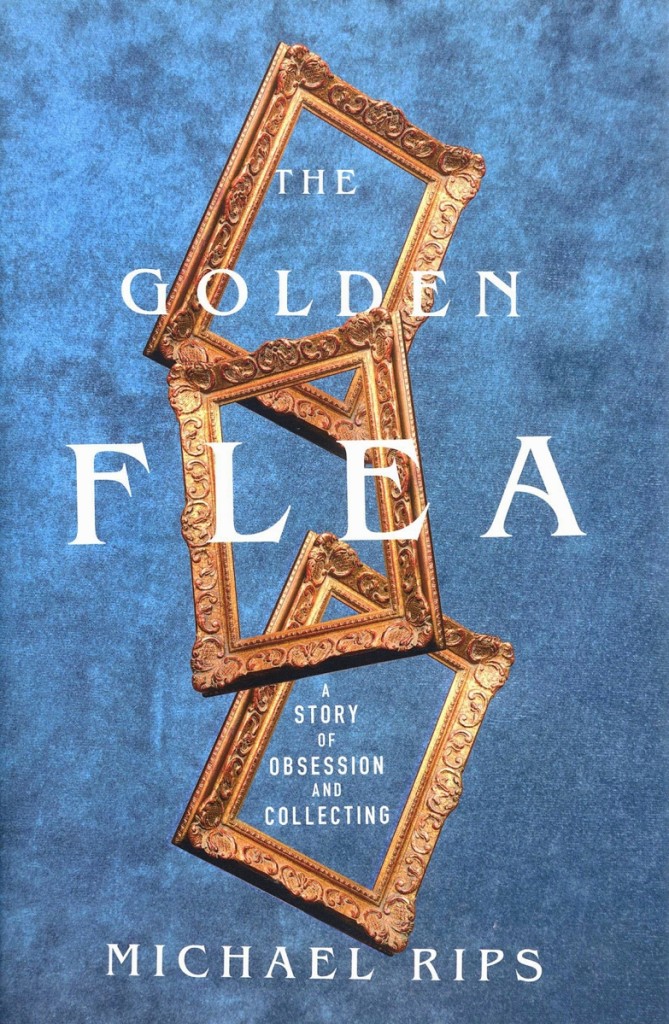
The Golden Flea: A Story of Obsession and Collecting, Michael Rips, W.W. Norton & Company, New York City; 2020; 224 pp; hardcover; $26.95.
An enchanting tale of the search for forgotten treasures at one of the greatest flea markets on earth.
Across America and around the world, people wander through flea markets to search for lost treasures. For decades, no such market was more renowned than the legendary Chelsea Flea Market, which sprawled over several blocks and within an old garage on the west side of Manhattan. Visitors would trawl through booths crammed with vintage dresses, rare books, ancient swords, glass eyeballs, Afghan rugs, West African fetish dolls, Old Master paintings and much more. In The Golden Flea, the acclaimed writer Michael Rips takes readers on a trip through this charmed world. With a beguiling style that has won praise from Joan Didion and Susan Orlean, Rips recounts his obsession with the flea and its treasures and provides a fascinating account of the business of buying and selling antiques. Along the way, he introduces us to the flea’s lovable oddball cast of vendors, pickers and collectors, including a haberdasher who only sells to those he deems worthy; an art dealer whose obscure paintings often go for enormous sums; a troubadour who sings to attract customers; and the Prophet, who finds wisdom among all the treasures and trash As Rips’s passion for collecting grows and the flea’s last days loom, he undertakes a quest to prove the provenance of a mysterious painting that just might be the one.
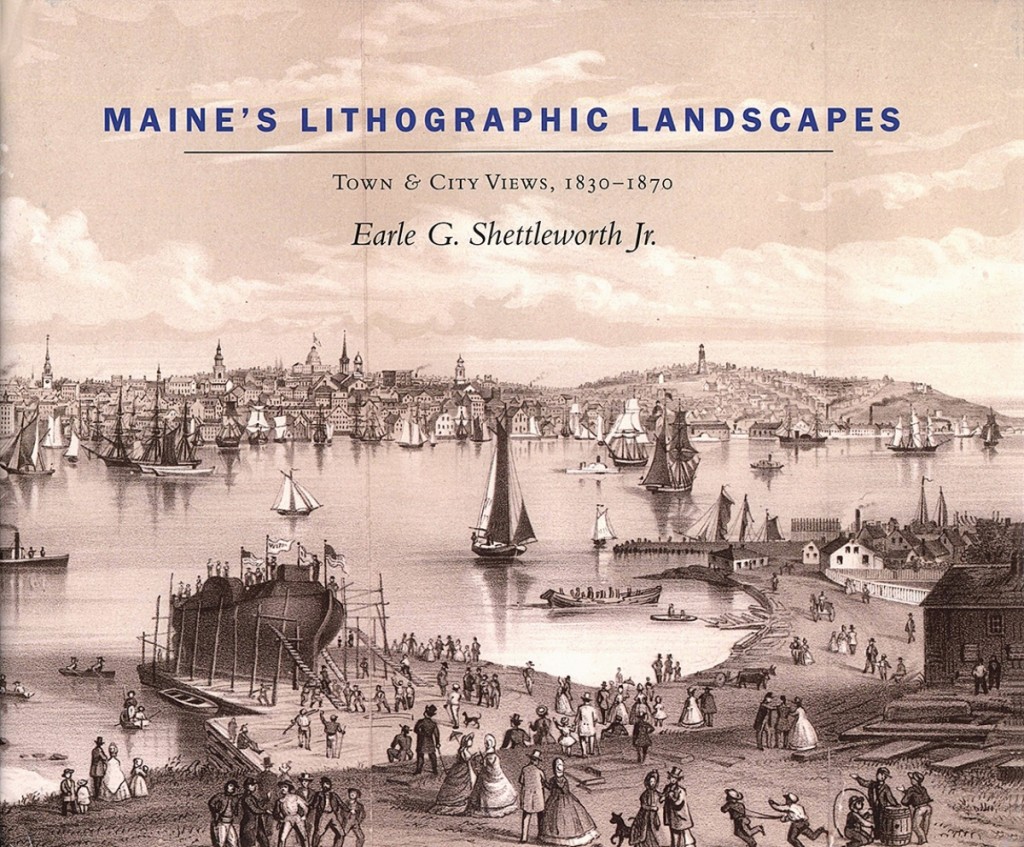
Maine’s Lithographic Landscapes: Town and City Views, 1830-1870, Earle G. Shettleworth Jr; Brandeis University Press, Waltham, Mass.; 2020; 144 pp; hardcover; $50.
During the Nineteenth Century, Americans celebrated their towns and cities through printed landscapes. In Maine, lithographs were commissioned from such leading artists as Fitz Henry Lane and talented, lesser-known local artists, such as Esteria Butler. This book reproduces many of these works and provides insights into how these growing centers of commerce and industry viewed themselves and wished to be viewed by others. It’s the perfect book for those who love Maine, both full-time residents and those who make it a beloved summer destination. Published in association with the Bowdoin College Museum of Art, the book is the perfect way to honor the bicentennial of Maine statehood. Earle G. Shettleworth Jr was born in Portland, Maine, and has lectured and written extensively on Maine history and architecture for more than 50 years. From 1976 to 2015, he served as the director of the Maine Historic Preservation Committee. Since 2004, he has served as the Maine State Historian.
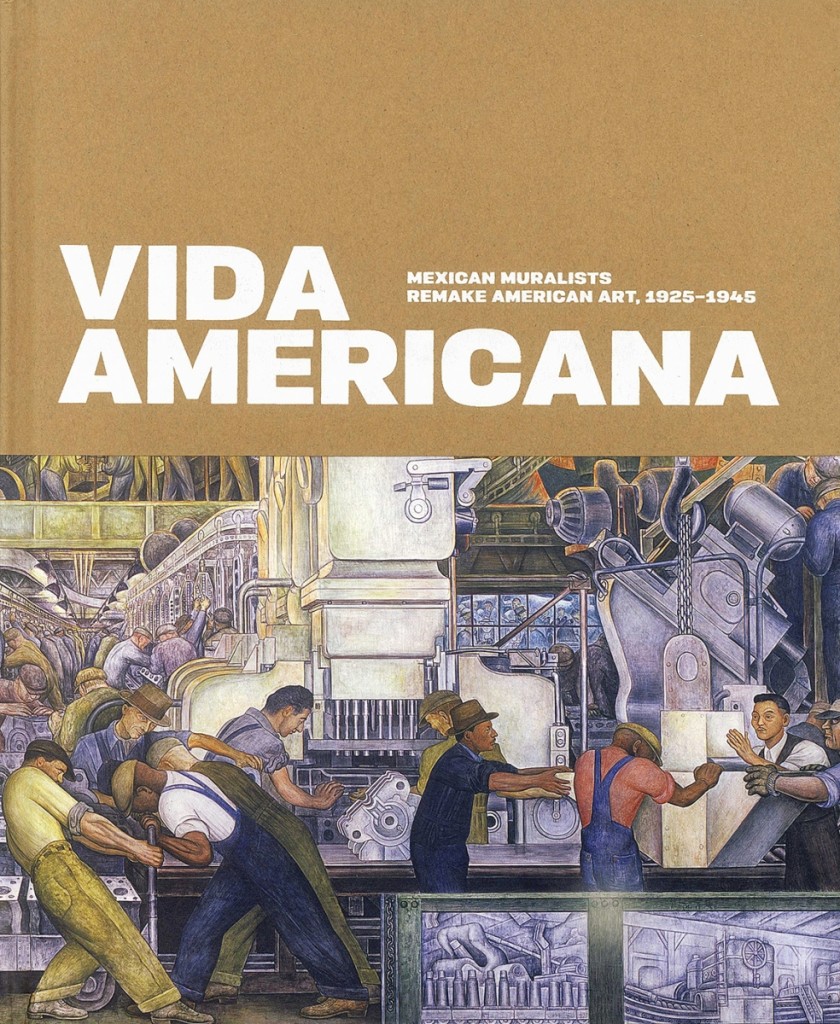
Vida Americana: Mexican Muralists Remake American Art, 1925-1945, edited by Barbara Haskell; Yale University Press, New Haven, Conn.; 2020; 264 pp; hardcover; $65.
An in-depth look at the transformative influence of Mexican artists on their US counterparts during a period of social change. The first half of the Twentieth Century saw prolific cultural exchange between the United States and Mexico, as artists and intellectuals traversed the countries’ shared border in both directions. For US artists, Mexico’s monumental public murals portraying social and political subject matter offered an alternative aesthetic at a time when artists were seeking to connect with a public deeply affected by the Great Depression. The Mexican influence grew as the artists José Clemente Orozco, Diego Rivera and David Alfaro Siqueiros traveled to the United States to exhibit, sell their work and make large-scale murals, working side-by-side with local artists, who often served as their assistants, and teaching them the fresco technique. Vida Americana examines the impact of their work on more than 70 artists, including Marion Greenwood, Philip Guston, Isamu Noguchi, Jackson Pollock and Charles White. It provides a new understanding of art history, one that acknowledges the wide-ranging and profound influence the Mexican muralists had on the style, subject matter and ideology of art in the United States between 1925 and 1945. Edited by Barbara Haskell, a curator at the Whitney Museum of American Art, it has essays by Mark A. Castro, Dafne Cruz Porchini, Renato González Mello, Marcela Guerrero, Andrew Hemingway, Anna Indych-López, Michael K. Schuessler, Gwendolyn DuBois Shaw, ShiPu Wang and James Wechsler.
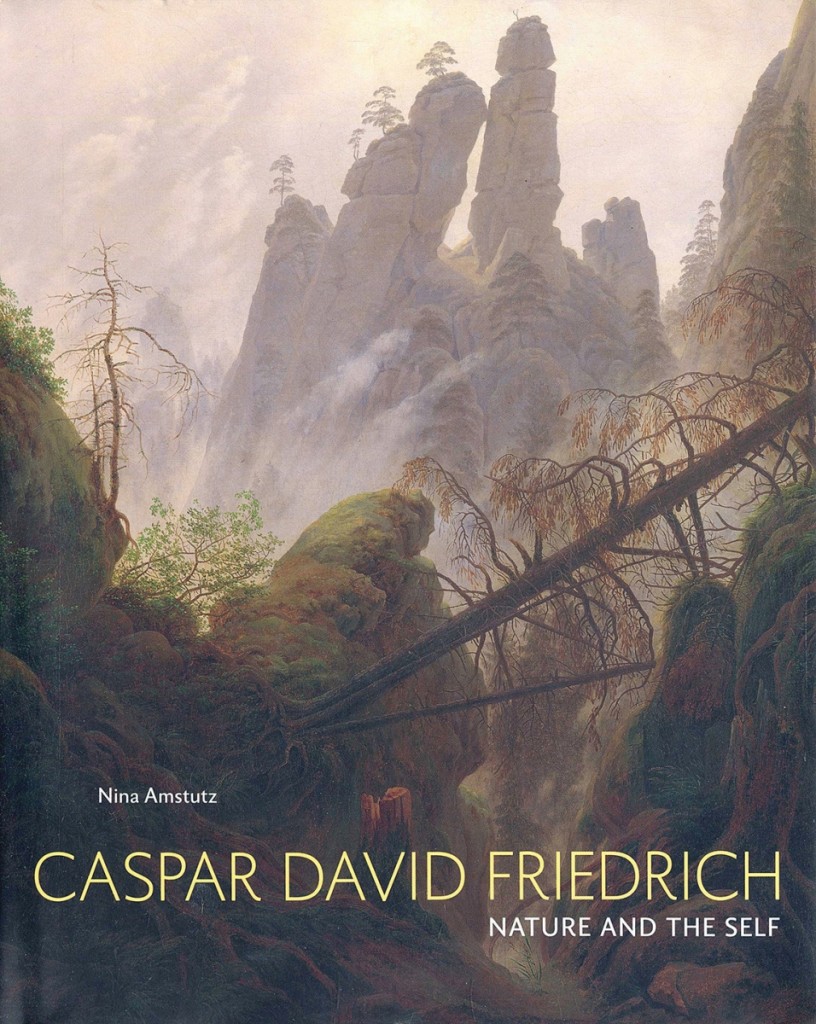
Caspar David Friedrich: Nature and the Self by Nina Amstutz; Yale University Press, New Haven, Conn.; 2020; 280 pp; hardcover; $65.
A revelatory look at how the mature work of Caspar David Friedrich engaged with concurrent developments in natural science and philosophy. Best known for his atmospheric landscapes featuring contemplative figures silhouetted against night skies and morning mists, Caspar David Friedrich (1774-1840) came of age alongside a German Romantic philosophical movement that saw nature as an organic and interconnected whole. The naturalists in his circle believed that observations about the animal, vegetable and mineral kingdoms could lead to conclusions about human life. Many of Friedrich’s often-overlooked later paintings reflect his engagement with these philosophical ideas through a focus on isolated shrubs, trees and rocks. Others revisit earlier compositions or iconographic motifs but subtly metamorphose the previously distinct human figures into the natural landscape. In this revelatory book, Nina Amstutz combines fresh visual analysis with broad interdisciplinary research to investigate the intersection of landscape painting, self-exploration and the life sciences in Friedrich’s mature work. Drawing connections between the artist’s anthropomorphic landscape forms and contemporary discussions of biology, anatomy, morphology, death and decomposition, Amstutz, assistant professor in the history of art and architecture at the University of Oregon, brings Friedrich’s work into the larger discourse surrounding art, nature, and life in the Nineteenth Century.
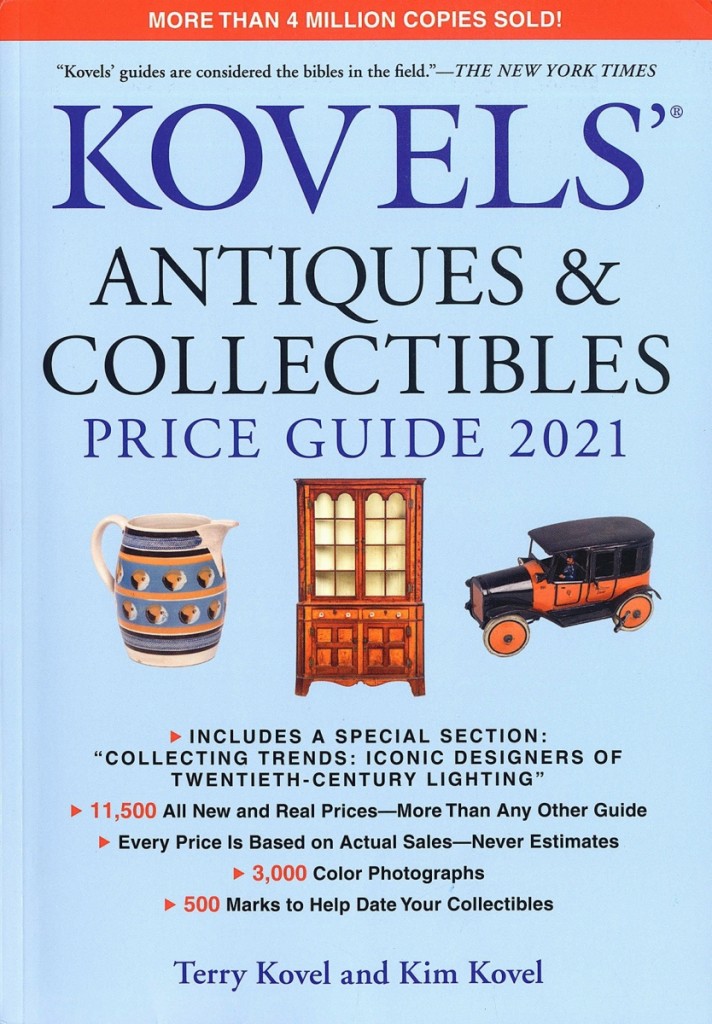
Kovels’ Antiques and Collectibles Price Guide 2021, Terry Kovel and Kim Kovel; Black Dog & Leventhal Publishers; 2020; 592 pp; paperback; $ 29.99.
The Kovels’ Antiques and Collectibles Price Guide 2021 is the most complete and best-illustrated price guide available – with 11,500 listings and more than 3,000 full-color photographs – from the most trusted name in the industry. The Kovels are the most trusted source for both the casual and expert collector. With 11,500 actual prices and 3,000 full-color photographs, the guide also features exceptionally well-organized, wide-ranging and up-to-the-minute information, and includes more tips, marks, logos and photographs than any other competitive title. Kovels’ is the only guide with prices based on actual sales from the previous calendar year, never estimates. Unlike other guides, which focus almost exclusively on English or high-priced items, Kovels’ covers all American and international items and includes reasonably priced goods. The book is organized by categories most sought-after by collectors, including Depression glass, dolls, jewelry, furniture, porcelain and sports memorabilia. Indexes, cross-references and expert commentary throughout empower readers to collect with confidence and price their own antiques.

The Birth Of The Boxlock Shotgun by John Campbell; Mowbray Publishing; gunandswordcollector.com; 2020; 120 pages with 230 B&W photos; softcover; $29.99.
The inside story of Anson & Deeley, Westley Richards, Harrington & Richardson, and the perfection of the hammerless action. The story of three Nineteenth Century English gentlemen and the guns they made and how these remarkably creative men sired a shooting heritage that most of us take for granted today. They were amazing craftsmen, businessmen and artists. But like all of us, they led personal lives fraught with hope, tragedy, victory and defeat. What caused the brilliant engineering alliance between William Anson and John Deeley to devolve into a seemingly obscure end? The surprising answers, and more, can be found in this book much of it previously unknown, and unpublished.
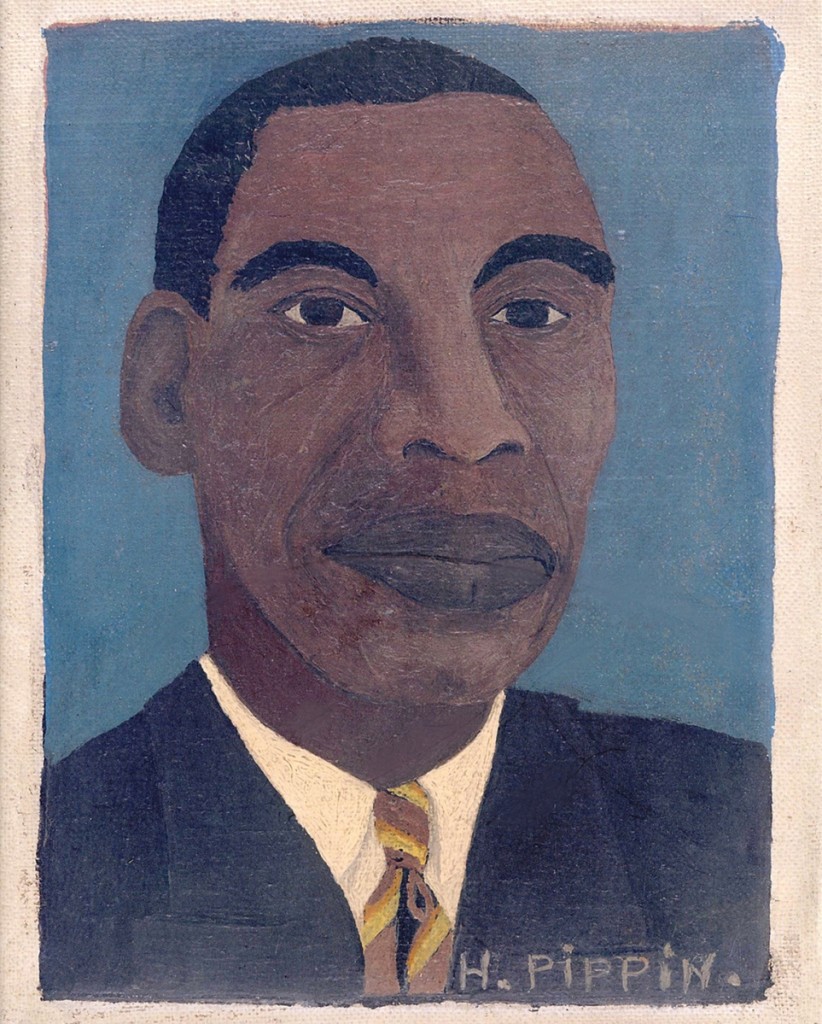
Horace Pippin, American Modern by Anne Monahan; Yale University Press, https://yalebooks.yale.edu/; 2020; 264 pages, 96 color and 25 B&W illustrations; hardcover; $50.
Arguably the most successful African American artist of his day, Horace Pippin (1888-1946) taught himself to paint in the 1930s and quickly earned international renown for depictions of World War I, Black families and American heroes Abraham Lincoln, abolitionist John Brown and singer Marian Anderson, among other subjects. This volume sheds new light on how the disabled combat veteran claimed his place in the contemporary art world. Organized around topics of autobiography, Black labor, artistic process and gift exchange, it reveals the range of references and critiques encoded in his work and the racial, class and cultural dynamics that informed his meteoric career. Horace Pippin, American Modern offers a fresh perspective on the artist and his moment that contributes to a more expansive history of art in the Twentieth Century. Featuring more than 60 of Pippin’s paintings, this volume also includes two previously unknown artist’s statements – “The Story of Horace Pippin as told by Himself” and “How I Paint” – and an exhibition history and list of artworks drawn from new research.
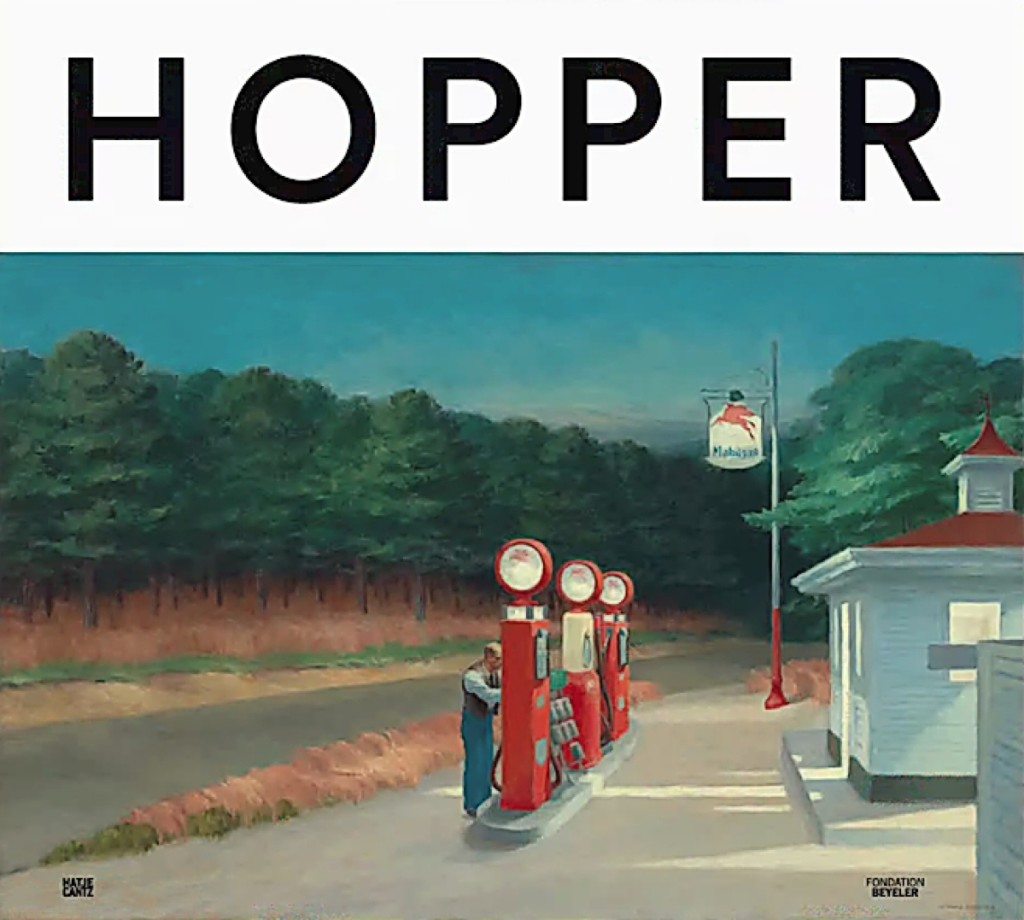
Edward Hopper: A Fresh Look on Landscape, edited with text by Ulf Küster, text by Erika Doss, David Lubin, Katharina Rüppell, Artbook, New York City; 2020; 168 pp; hardcover; $68.
A fresh look at Hopper’s iconic vision of the American landscape – its gas stations, diners and highways. Edward Hopper’s world-famous, instantly recognizable paintings articulate an idiosyncratic view of modern life, unfolding in a world of lonely lighthouses, gas stations, movie theaters, bars and hotel rooms. With his impressive subjects, independent pictorial vocabulary and virtuoso play of colors, Hopper’s work continues to this day to color our memory and imaginary of the United States in the first half of the Twentieth Century. Hopper began his career as an illustrator and became famous around the globe for his oil paintings. These paintings testify to the artist’s great interest in the effects of color and his mastery in depicting light and shadow, at work whether the artist was painting alienated figures in dreamlike interiors or desolate American landscapes. This book was published to accompany a major exhibition at the Fondation Beyeler of Hopper’s iconic images of the vast American landscape. The catalog gathers together paintings, watercolors and drawings made by the artist between the 1910s and the 1960s, and supplements them with essays by Erika Doss, David Lubin and Katharina Rüppell, focused on the subject of depicting the landscape.
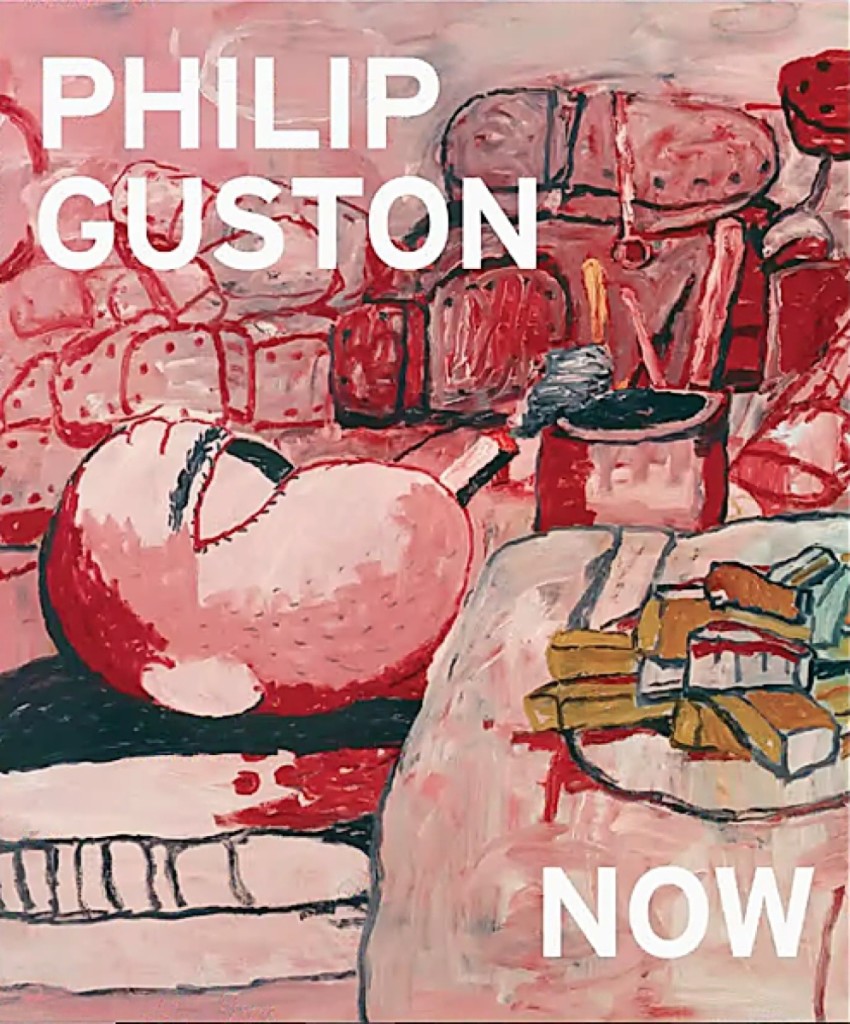
Philip Guston Now, text by Harry Cooper, Mark Godfrey, Alison de Lima Greene, Kate Nesin; D.A.P./National Gallery Of Art, Washington, DC; 2020; 280 pp; hardcover; $60.
A sweeping retrospective of Philip Guston’s influential work, from Depression-era muralist to abstract expressionist to tragicomic contemporary master. Philip Guston – perhaps more than any other figure in recent memory – has given contemporary artists permission to break the rules and paint what, and how, they want. His winding career, embrace of “high” and “low” sources, and constant aesthetic reinvention defy easy categorization, and his 1968 figurative turn is by now one of modern art’s most legendary conversion narratives. “I was feeling split, schizophrenic. The war, what was happening in America, the brutality of the world. What kind of man am I, sitting at home, reading magazines, going into a frustrated fury about everything – and then going into my studio to adjust a red to a blue?” And so Guston’s sensitive abstractions gave way to large, cartoonlike canvases populated by lumpy, sometimes tortured figures and mysterious personal symbols in a palette of juicy pinks, acid greens and cool blues. That Guston continued mining this vein for the rest of his life – despite initial bewilderment from his peers – reinforced his reputation as an artist’s artist and a model of integrity; since his death 50 years ago, he has become hugely influential as contemporary art has followed Guston into its own antic twists and turns. Published to accompany the first retrospective museum exhibition of Guston’s career in more than 15 years, Philip Guston Now includes a lead essay by Harry Cooper surveying Guston’s life and work, and a definitive chronology reflecting many new discoveries.
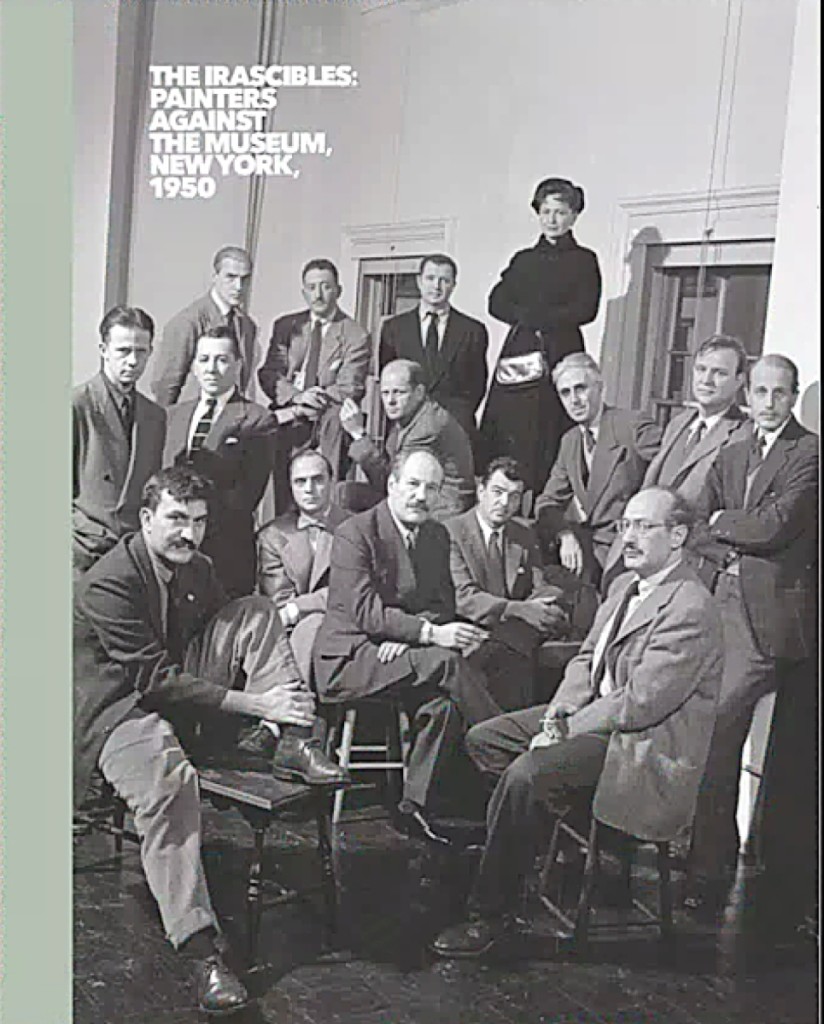
The Irascibles: Painters Against the Museum (New York, 1950), text by Daniel Belasco, Bradford R. Collins, Beatriz Cordero, Charles H. Duncan, Horacio Fernández, Manuel Fontán del Junco, Sanford Hirsch, Frauke V. Josenhans, Marin R. Sullivan, María Toledo, Inés Vallejo, Artbook/Fundación Juan March; New York City; 2020; 304 pp; hardcover; $55.
The first documentation of the 1950 showdown between 18 leading abstract expressionists and the Metropolitan Museum of Art. In 1950, 18 American abstract painters signed an open letter addressed to the president of the Metropolitan Museum of Art to express their intense disapproval of the museum’s contemporaneous exhibit “American Painting Today: 1950.” The artists were William Baziotes, James Brooks, Fritz Bultman, Jimmy Ernst, Adolph Gottlieb, Hans Hofmann, Weldon Kees, Willem de Kooning, Robert Motherwell, Barnett Newman, Jackson Pollock, Richard Pousette-Dart, Ad Reinhardt, Mark Rothko, Theodoros Stamos, Hedda Sterne, Clyfford Still and Bradley Walker Tomlin. This artistic coalition, which included many members of the New York School and is now considered a watershed movement in mid-Twentieth Century American art history, challenged the museum’s policies for a narrow understanding of what made certain art worth exhibiting. Though they resisted being labeled as a collective, media coverage of the museum boycott, which included a now-famous group portrait in Life magazine taken by photographer Nina Leen, ultimately contributed to the success of the 18 “irascibles” in what became known as the abstract expressionist movement. This publication collects 18 paintings by the artists, images from Leen’s photoshoot and extensive documentation of the letter-writing process with relevant catalogs and magazines. Featuring more than 230 illustrations alongside original essays by several art historians and curators that examine the complex history of the New York School, this volume serves as a time capsule of the exciting period of early abstract expressionism in the United States.
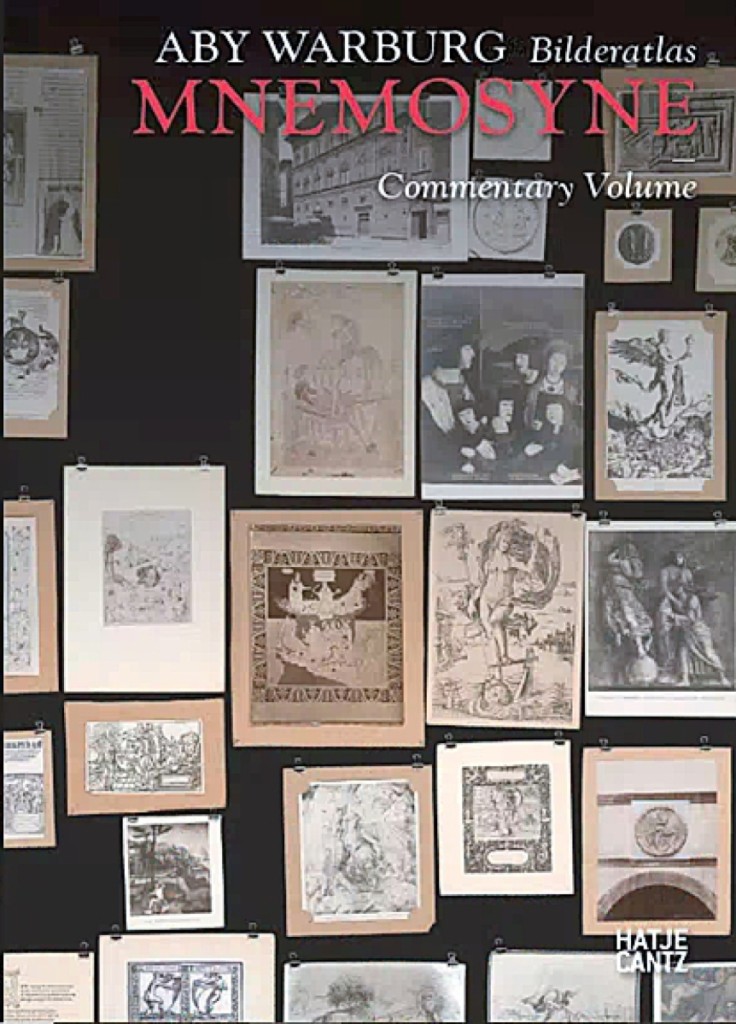
Aby Warburg: Bilderatlas Mnemosyne, Commentary Volume, text by Roberto Ohrt, Axel Heil, Bernd Scherer, Bill Sherman, Claudia Wedepohl, Artbook, New York City, 2020; 600 pp; hardcover; $75.
The essential panel-by-panel companion to Aby Warburg’s epic atlas. Accompanying the first ever English-language publication of German art historian Aby Warburg’s (1866-1929) Bilderatlas Mnemosyne, this commentary volume provides an explication of each of the panels constituting Warburg’s Modernist masterpiece. The Bilderatlas Mnemosyne was begun in 1925 and ended with Warburg’s death in 1929. He created it as a series of 63 large, themed panels, each featuring a constellation of images – postcards, maps, adverts, reproductions of artworks – that trace the migration of symbols from antiquity to the present. Warburg’s goal was to show how certain gestures and icons repeated themselves across history, constituting what he called a “pathos formula” – that is, an enduring emotional metaphor. Warburg had the panels photographed, conceiving of their ultimate incarnation as being in book form – but never completed the atlas. Assembled over several years through a collaborative process, the texts in this volume analyze each of the panels (which the English edition of the Atlas itself painstakingly reconstructs from the archives of the Warburg Institute). The book is prefaced by an introduction and a general analysis of the whole structure of the Atlas.
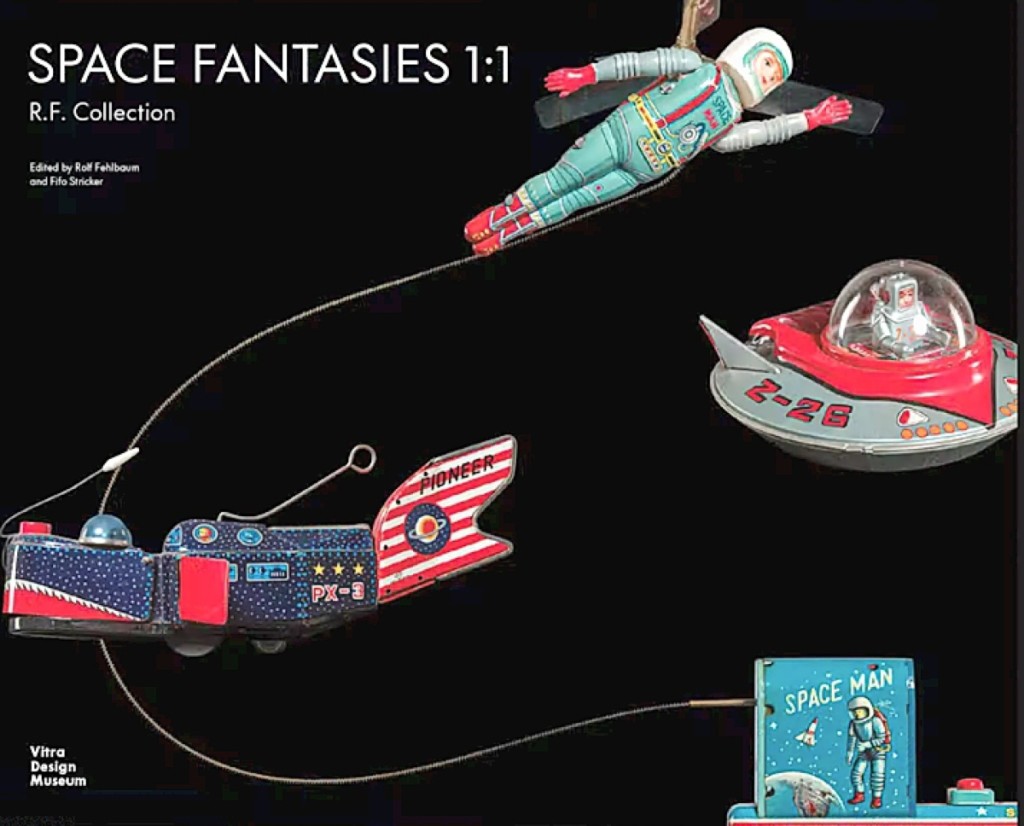
Space Fantasies 1:1 : R.F. Collection, edited by Rolf Fehlbaum, Fifo Stricker, Vitra Design Museum/Artbook, New York City; 2020; 296 pp; hardcover; $215.
This limited-edition collection of space exploration toys – from shuttles to space dogs – taps into the nostalgia and imagination of Twentieth Century science fiction. Presented in this oversize publication are 146 aerospace-related toys from the collection of Rolf Fehlbaum, Vitra’s chairman emeritus and the founder of Vitra Design Museum. Toys related to space exploration – rockets, robots and astronaut figurines – exploded in popularity in the 1930s with the success of space opera comic strips such as Buck Rogers and Flash Gordon, which portrayed postwar fantasies of untold technological possibilities. From there, sci-fi only gained a wider audience as the Soviet/American space race began and people of all ages turned their gazes skywards to wonder about what marvels may exist beyond Earth’s orbit. The toys in this volume are shown at their original size with the available packaging, organized into ten categories and arranged in chronological order by their manufacture dates. Some of the toys depict amusing conjectures for the future of aeronautical exploration such as space dogs, space elephants and even a space whale, while others are more realistic replicas of rockets in miniature. Infused with an undeniable nostalgia, this collection maintains the childlike wonder of the toys’ initial audiences and invites present-day readers to both reflect on the era’s technological advancements and look to the future for what discoveries may still be on the horizon.
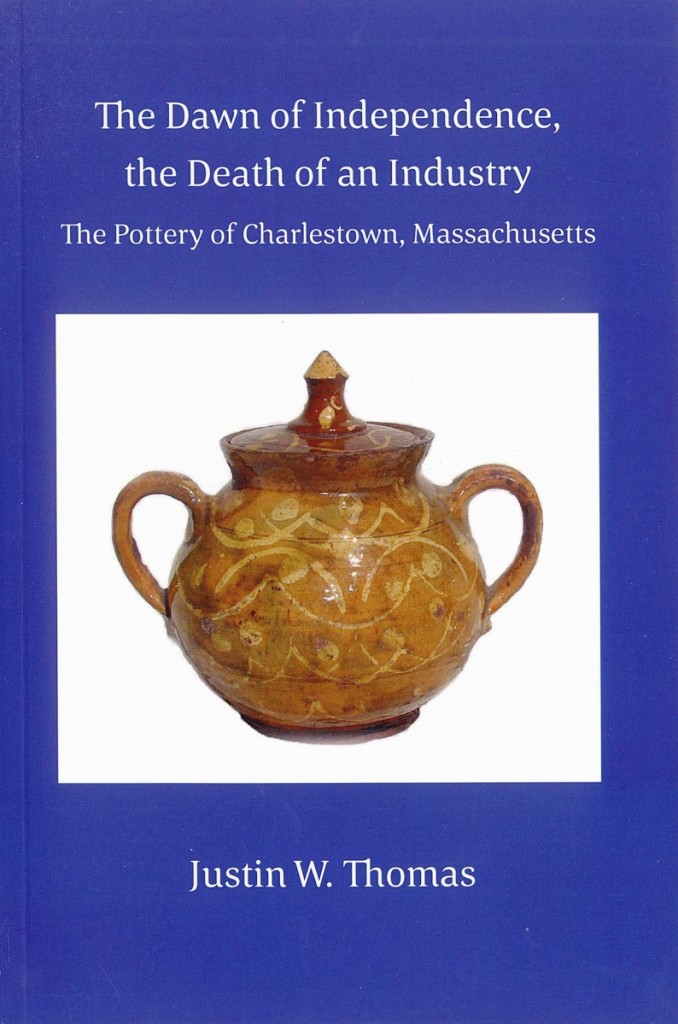
The Dawn of Independence: The Death of An Industry by Justin W. Thomas; Historic Beverly, https://www.historicbeverly.net; 2020; 166 pages; softcover; $16.
The red earthenware industry in Charlestown, Mass., supplied households throughout coastal New England with utilitarian wares, circa 1635-1775. The industry was unsurpassed in New England with production recovered as far north as Canada and as far south as the Carolinas. Dozens of potters and a number of businesses made up this industry; the most prominent years of production were 1740-1775. There was even an attempt to produce stoneware in the 1740s in competition with New York City, Philadelphia and Virginia. The identity of this industry was destroyed in 1775 during the Battle of Bunker Hill. More than 200 years later, this identity was revealed when archaeologists excavated part of Charlestown for Boston’s Big Dig Project. These important artifacts provide a better understanding of how far Charlestown’s pottery traveled before 1775. This book is the first of its kind, exploring the history of Charlestown’s industry, the pottery, the exports and its historical significance.

